-
Medieval Celtic Deskford Carnyx 18 Gauge Brass Fully Playable carnyx for sale Medieval Celtic Deskford Carnyx 18 Gauge Brass Fully Playable carnyx for sale
Medieval Celtic Deskford Carnyx 18 Gauge Brass Fully Playable carnyx for sale
Sale price $249.99 Regular price $899.99 -
Medieval Carnyx of Tintignac Medieval Celtic War Horn Playable Medieval Carnyx of Tintignac Medieval Celtic War Horn Playable
Medieval Carnyx of Tintignac Medieval Celtic War Horn Playable
Sale price $249.99 Regular price $499.99 -
Medieval Celtic DeskFord war Iron Age Brass Playable Carnyx Trumpet Horn Medieval Celtic DeskFord war Iron Age Brass Playable Carnyx Trumpet Horn
Medieval Celtic DeskFord war Iron Age Brass Playable Carnyx Trumpet Horn
Sale price $249.99 Regular price $499.99 -
Medieval Celtic Deskford Carnyx Fully Playable 18 Gauge Brass Masterpiece Medieval Celtic Deskford Carnyx Fully Playable 18 Gauge Brass Masterpiece
Medieval Celtic Deskford Carnyx Fully Playable 18 Gauge Brass Masterpiece
Sale price $249.99 Regular price $499.99 -
Carnyx of Tintignac Medieval deskford Trumpet Celtic Carnyx War Horn 2 Fully Playable Carnyx of Tintignac Medieval deskford Trumpet Celtic Carnyx War Horn 2 Fully Playable
Carnyx of Tintignac Medieval deskford Trumpet Celtic Carnyx War Horn 2 Fully Playable
Sale price $249.99 Regular price $899.99 -
Medieval Brass Carnyx of Tintignac Celtic Deskford War Horn Fully Playable Gold 18 Gauge Brass Medieval Brass Carnyx of Tintignac Celtic Deskford War Horn Fully Playable Gold 18 Gauge Brass
-
Medieval Celtic Deskford Carnyx Fully Playable 18 Gauge Brass Masterpiece Medieval Celtic Deskford Carnyx Fully Playable 18 Gauge Brass Masterpiece
Medieval Celtic Deskford Carnyx Fully Playable 18 Gauge Brass Masterpiece
Sale price $249.99 Regular price $499.99 -
Playable 18 Gauge Bronze Carnyx: Tintignac Deskford Celtic War Horn Trumpet Playable 18 Gauge Bronze Carnyx: Tintignac Deskford Celtic War Horn Trumpet
Playable 18 Gauge Bronze Carnyx: Tintignac Deskford Celtic War Horn Trumpet
Sale price $249.99 Regular price $499.99 -
Celtic Carnyx Brass Instrument – Handcrafted Duo for Reenactment, Rituals & Cosplay Celtic Carnyx Brass Instrument – Handcrafted Duo for Reenactment, Rituals & Cosplay
-
Carnyx Deskford Playable Trumpet Celtic War Horn Iron Age Trumpet Brass Carynx Carnyx Deskford Playable Trumpet Celtic War Horn Iron Age Trumpet Brass Carynx
Carnyx Deskford Playable Trumpet Celtic War Horn Iron Age Trumpet Brass Carynx
Sale price $249.99 Regular price $499.99 -
Celtic Serpent Carnyx Deskford War Horn Carnyx Trumpet Horn Snake Version Celtic Serpent Carnyx Deskford War Horn Carnyx Trumpet Horn Snake Version
Celtic Serpent Carnyx Deskford War Horn Carnyx Trumpet Horn Snake Version
Sale price $249.99 Regular price $499.99 -
Carnyx Deskford Playable Trumpet Celtic War Horn Iron Age Trumpet Carnyx Deskford Playable Trumpet Celtic War Horn Iron Age Trumpet
Carnyx Deskford Playable Trumpet Celtic War Horn Iron Age Trumpet
Sale price $249.99 Regular price $499.99 -
Medieval 18 Gauge Brass Carnyx of Tintignac Celtic war Horn fully Playable Medieval 18 Gauge Brass Carnyx of Tintignac Celtic war Horn fully Playable
Medieval 18 Gauge Brass Carnyx of Tintignac Celtic war Horn fully Playable
Sale price $249.99 Regular price $499.99 -
Carnyx of Tintignac - Medieval Deskford Celtic War Trumpet Horn Carnyx of Tintignac - Medieval Deskford Celtic War Trumpet Horn
Carnyx of Tintignac - Medieval Deskford Celtic War Trumpet Horn
Sale price $249.99 Regular price $499.99 -
Authentic 18 Gauge Brass Iron Age Celtic Carnyx Deskford Fully Playable Authentic 18 Gauge Brass Iron Age Celtic Carnyx Deskford Fully Playable
Authentic 18 Gauge Brass Iron Age Celtic Carnyx Deskford Fully Playable
Sale price $249.99 Regular price $499.99 -
Carnyx Deskford Playable Trumpet Celtic War Horn Iron Age Trumpet Brass Carynx Carnyx Deskford Playable Trumpet Celtic War Horn Iron Age Trumpet Brass Carynx
Carnyx Deskford Playable Trumpet Celtic War Horn Iron Age Trumpet Brass Carynx
Sale price $249.99 Regular price $499.99 -
Brass Carnyx of Tintignac Celtic War Fully Playable Trumpet Horn Halloween Gift Brass Carnyx of Tintignac Celtic War Fully Playable Trumpet Horn Halloween Gift
Brass Carnyx of Tintignac Celtic War Fully Playable Trumpet Horn Halloween Gift
Sale price $249.99 Regular price $499.99
Learn about : Celtic Carnyx Horn
The Celtic Carnyx: Symbolism, Archaeology & History, A Unique instrument Celtic Carnyx War Horn For Sale 🎺
The ancient Celtic Carnyx : Animal Symbolism in the Iron Age
The Celtic Carnyx stood out during the Iron Age, animal motifs on weapons and Armor symbolized aggression and ferocity, from around 200 BCE to 200 CE. This bronze trumpet featured an elongated S shape. The design included a long, straight central part held vertically, while the mouthpiece and bell were horizontal. Notably, the bell resembled the head of a boar or another animal. This striking and functional design played a crucial role in warfare. These symbols reinforced the warrior’s power and presence in battle.
The Carnyx rallied troops and intimidated enemies. Polybius noted that its powerful sound allowed leaders to control the battlefield. Consequently, the instrument's height made it audible over the noise of battles and ceremonies. Therefore, it served as an essential tool for communication and boosting morale. Indeed, its unique design and powerful sound made the Carnyx a memorable and effective instrument.

Discovery of Carnyxes at Tintignac
- Tintignac: In 2004, archaeologists discovered a first-century BCE Gallic ritual pit at Tintignac, Corrèze, France. TThey uncovered a Gallic pit from the first century BC. This pit contained over 500 metal fragments ancient instrument., including seven carnyx's - one almost complete. Before this discovery, experts had found only five similar carnyx instruments across, Europe (Scottland, France, Germany, Romania, and Switzerland). Four of these instruments featured boar's heads, Tintignac examples had boar’s heads, while one appeared serpent-like. These discoveries suggest a ritual function tied to the Roman conquest of Gaul. researchers find allowed to identify fragments discovered in northern Italy in the 2010 as parts of the same type of instrument. Consequently, this discovery provided new insights into the spread and significance of these ancient tools.

The Deskford Carnyx : In 1816, archaeologists discovered the Deskford instrument at Leitchestown farm in Banffshire, Scotland, remains the best-known British Isles example. Only the boar’s head artifact that survives, Experts believes that people deposited to have been a ritual deposit.
The Museum of Scotland currently houses the Deskford instrument, with Aberdeenshire Museums Service lending it. Unlike many similar artifacts linked to warfare, the Deskford instrument’s location and age suggest it served a peaceful, ceremonial role. Before the 2004 discovery in France, scholars considered it the best surviving example and used it as a model for earlier reconstructions.
Analysis shows it was made of brass Craftsmen made the Deskford instrument mostly from brass — They likely crafted with recycled Roman materials used sparingly by the Celtic cultures — Based on its metallurgy the Museum of Scotland dates its construction to between 80 and 250 AD. They noted its distinct Scottish design, which differs from similar artifacts found on the continent. The decoration matches the northeast Scottish bronze-working style of the time, indicating that local artisans produced it and that it represents a unique regional variant.
What animal is the Celtic Carnyx :
A celtic carnyx is a striking Iron Age war horn, about as tall as a person. It often has a head shaped like an animal, usually a boar. Like modern bagpipes, it boosted troop morale and intimidated enemies during battles. Additionally, people played it at feasts and festivals. This unique instrument is featured in a book that covers every known example across Europe and beyond. The book includes images on Celtic coins and Roman sculptures, along with rare surviving pieces.
The Deskford carnyx stands out, especially as a prized national treasure of Scotland. Discovered in Banffshire around 1816, it now rests with Aberdeenshire Heritage. Since 1947, it has been on display due to its global importance. This carnyx showcases a boar-shaped head crafted from sheet bronze and brass. Scholars and artists have shown significant interest in it. In the 1990s, Dr. John Purser began creating a functional replica. As a result, researchers studied its archaeological and musical significance further.
The sound of the carnyx?
Celtic Carnyx was played As a modern brass player, you will find it easy to play the carnyx. Its design features a wide tube and mouthpiece. This wide opening helps produce sound easily. However, it also makes the breath escape quickly. The carnyx’s unique shape changes how air flows, setting it apart from other brass musical instruments.
- Etymology
The word "carnyx" comes from the Gaulish root "carn-" or "cern-." This root means "antler" or "horn." It also links to the name of the god Cernunnos.
- Symbolism
In Iron Age Britain, people used animal symbols like boars and dragons to convey aggression and power. For example, the Deskford carnyx stood out as a significant symbol. These images adorned shields, weapons, and ceremonial items. They enhanced the prestige of leaders and warriors. Moreover, the symbols reflected societal values of strength and dominance. Consequently, they reinforced the status of those who displayed them.
🎺 Modern Reconstructions of the Carnyx
The Deskford Carnyx Reborn
The first modern reconstruction of the Deskford Carnyx was launched in 1991 by Dr. John Purser, with support from the Glenfiddich Living Scotland Award and the National Museums of Scotland. The team included:
-
Fraser Hunter (archaeologist)
-
John Creed (silversmith)
-
John Kenny (trombonist)
After 2,000 years of silence, the carnyx was heard again in April 1993 at the National Museum of Scotland.
John Kenny and Carnyx Performances
In 1993, John Kenny became the first musician in two millennia to play the carnyx. Since then, he has performed worldwide—in concert halls, on television, in films, and at major cultural events. Highlights include:
-
Featured on seven CDs with original compositions for carnyx.
-
Performed solo in front of 65,000 people at Stade de France, Paris (2003).
-
Premiered The Music of the Forest (by Christopher Gibbs) in 2017 with the Renaissance Singers of Blackburn Cathedral, evoking the history of the Forest of Bowland.
The Carnyx in Popular Culture
The carnyx has captured modern imagination and appears across film, games, and literature:
-
🎬 Gladiator (2000) – used in the opening battle scene.
-
🎬 Druids (2001) – featured in Gallic battle sequences.
-
🎬 Brave (2012, Pixar) – appears in early scenes.
-
🎶 Sid Meier’s Civilization VI – part of the Gallic soundtrack.
-
📚 Asterix comics – the bard Cacofonix is often depicted carrying or blowing a carnyx.
Facts About the Celtic Carnyx
What is the Carnyx? The Carnyx is a big horn that people used a long, long time ago, mostly during a time called the Iron Age. This was around 200 years before Jesus was born.
How Does it Look? The Carnyx has a unique shape. It has an S-shaped handle, a tall middle part, and a loud animal head at the end that looks a bit like a warthog.
What Did People Use it For? In battles, the Carnyx made very loud sounds. These sounds helped soldiers know what to do and scared their enemies. It was like a loud call to help keep everything in order during fights.
Why Was it Important? The Carnyx wasn't just for fighting. People also used it during dances and celebrations. It was important in both war and fun times for the Celtic people.
Finding the Carnyx Today: The Deskford Carnyx is the only one we still have from the British Isles. Recently, some other Carnyx pieces were found in France, which helped us learn more about how they were used.
Where Does the Name Come From? The name "Carnyx" is thought to come from old words meaning "horn." It is connected to Celtic history and their special things.
What Do the Decorations Mean? The animal heads on the Carnyx are important too. They showed the strength and belonging of different groups of people during battles.
Making New Carnyxes: Today, some people make new versions of the Carnyx to see how it sounded and what it was like to use it long ago.

More names : julius caesar, , musical instrument, carnyx, players, diodorus siculus, scotland in 1816, produce a harsh, celtic trumpets, gundestrup cauldron


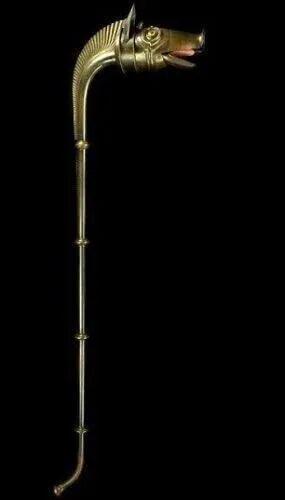
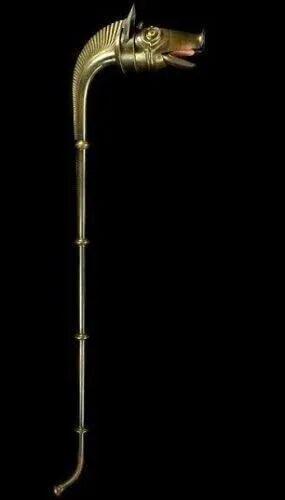





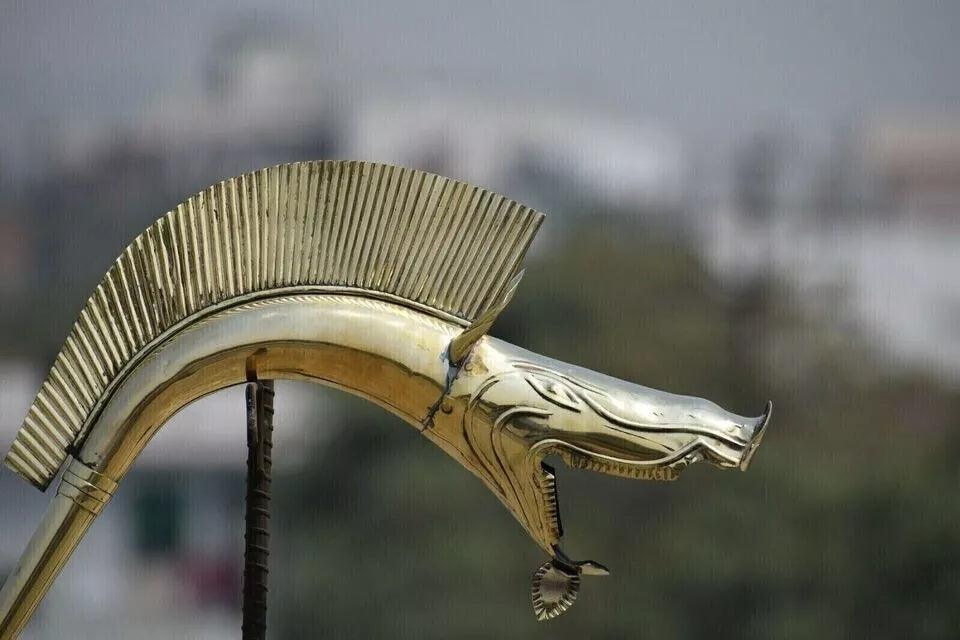


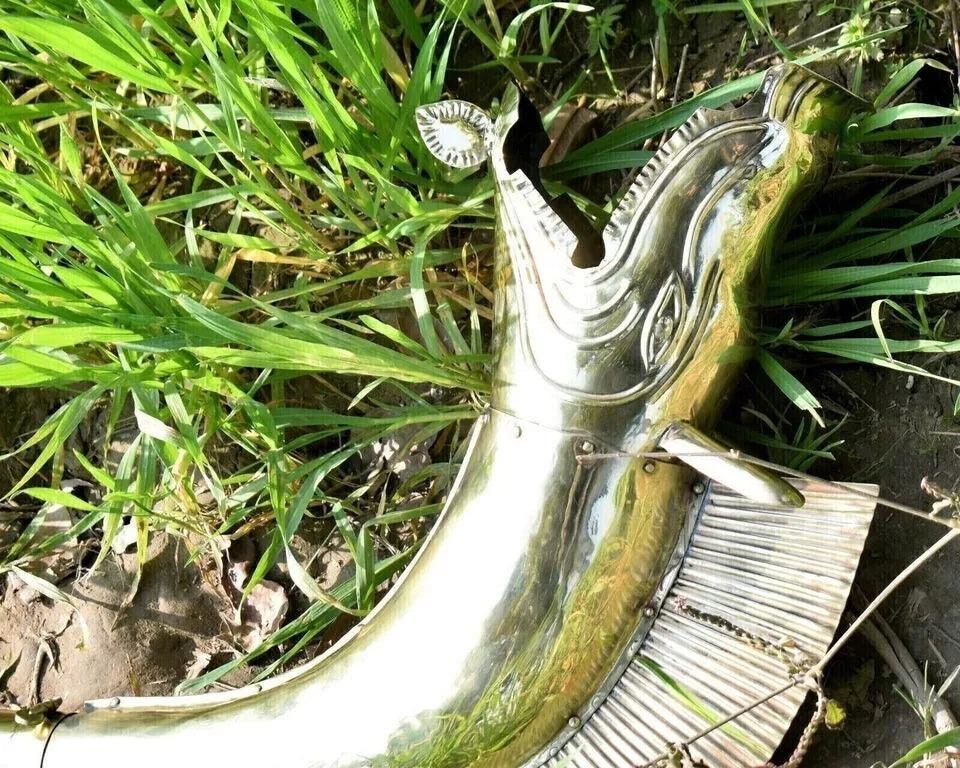



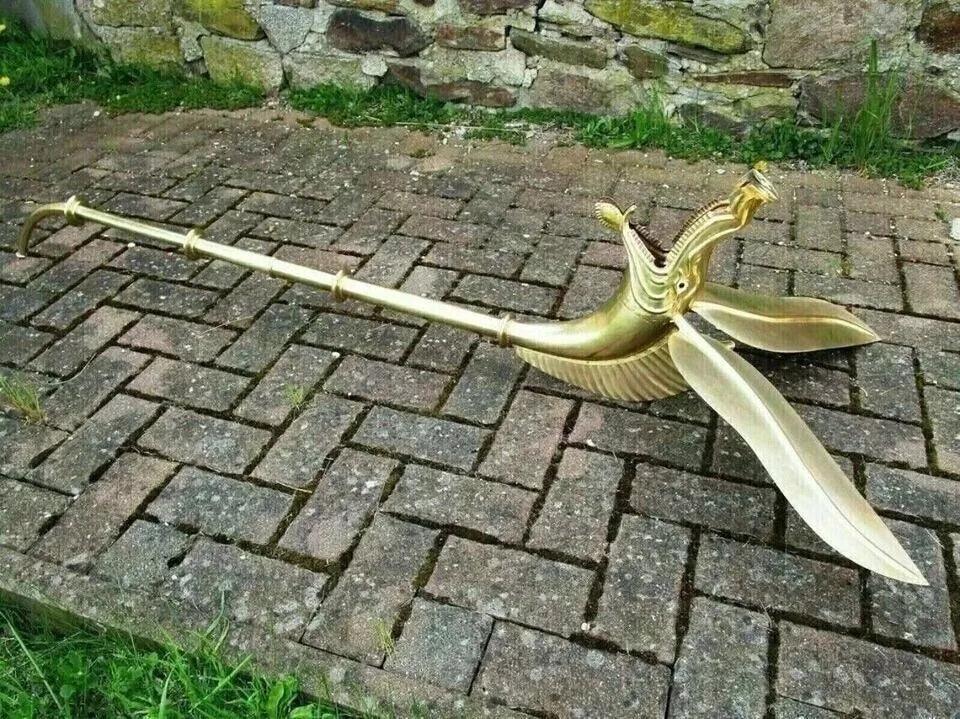
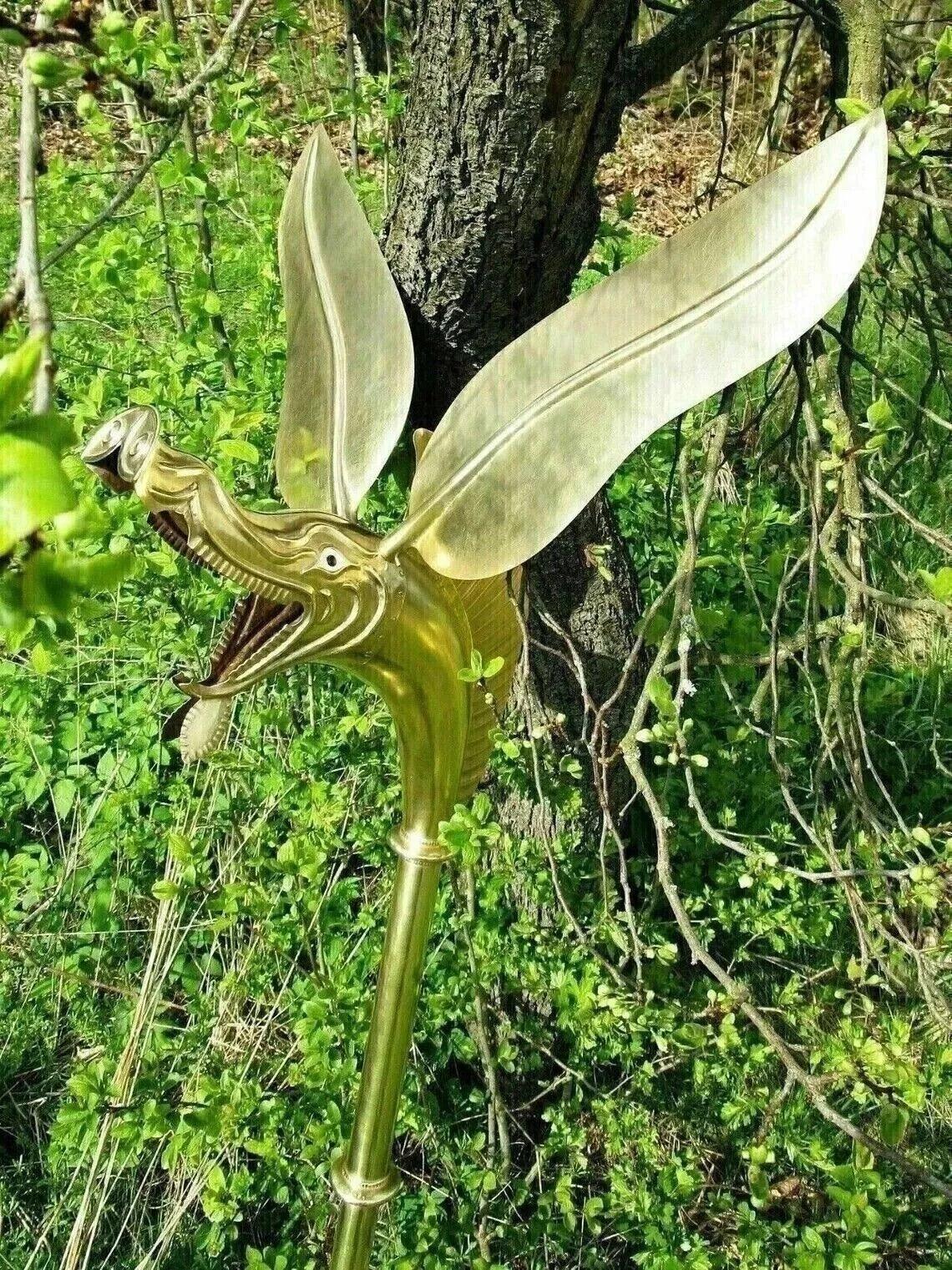
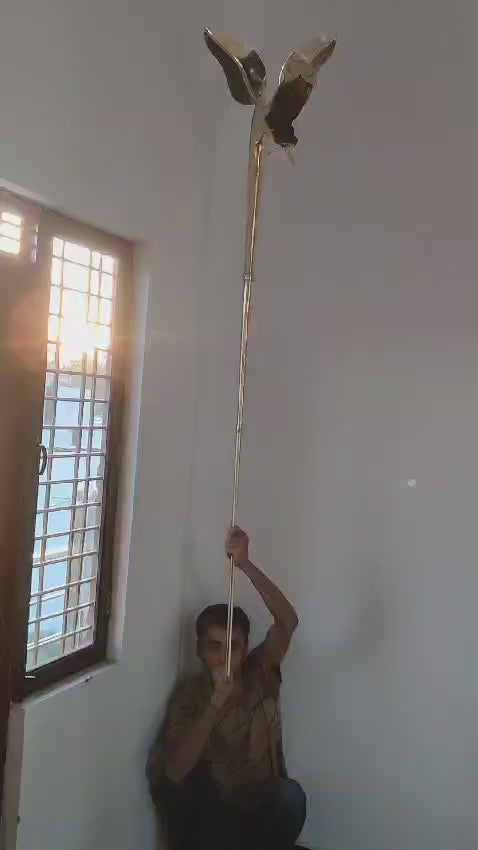
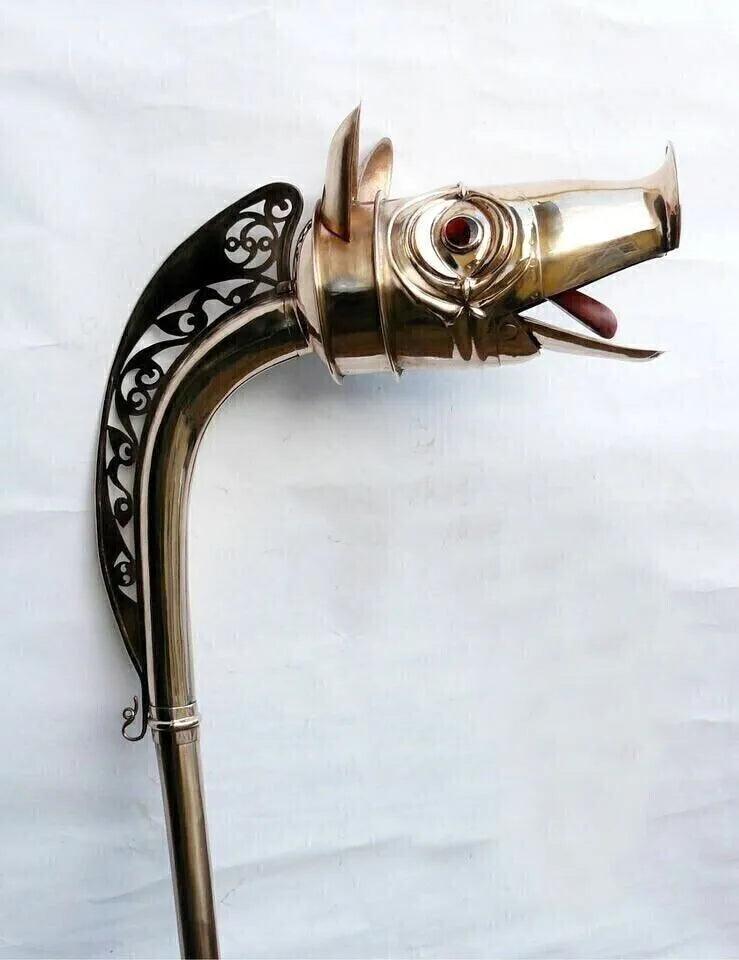
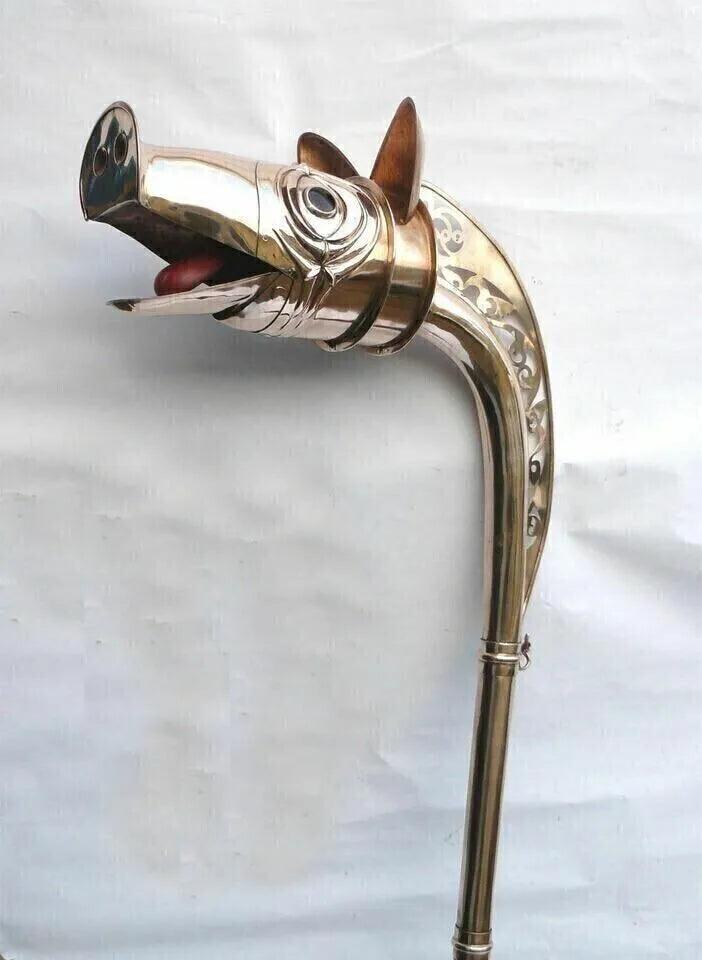
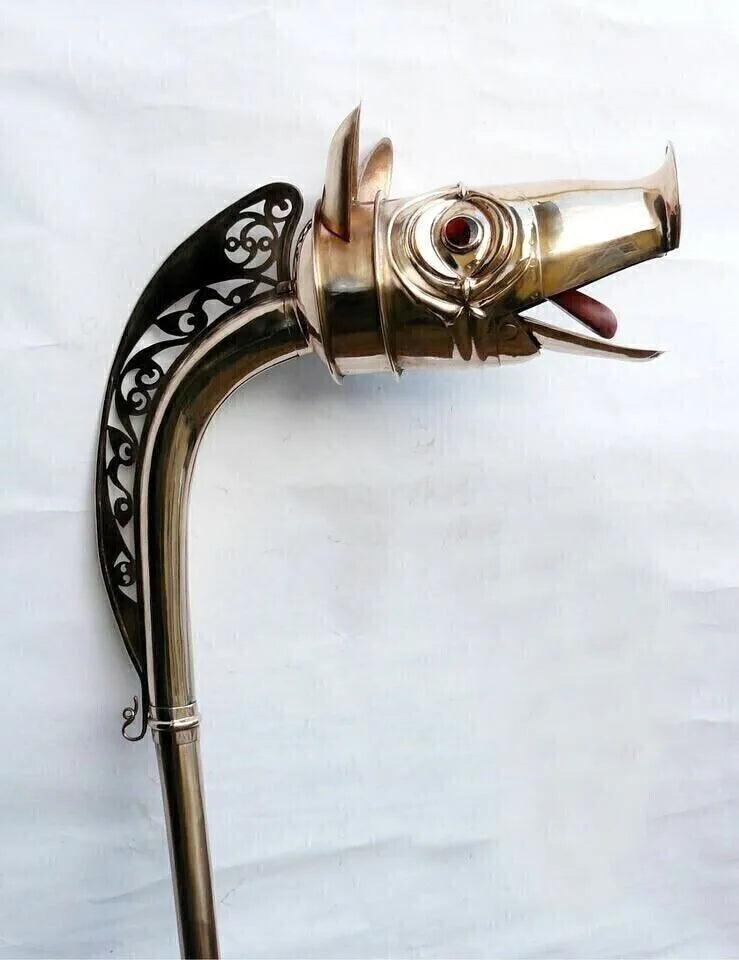
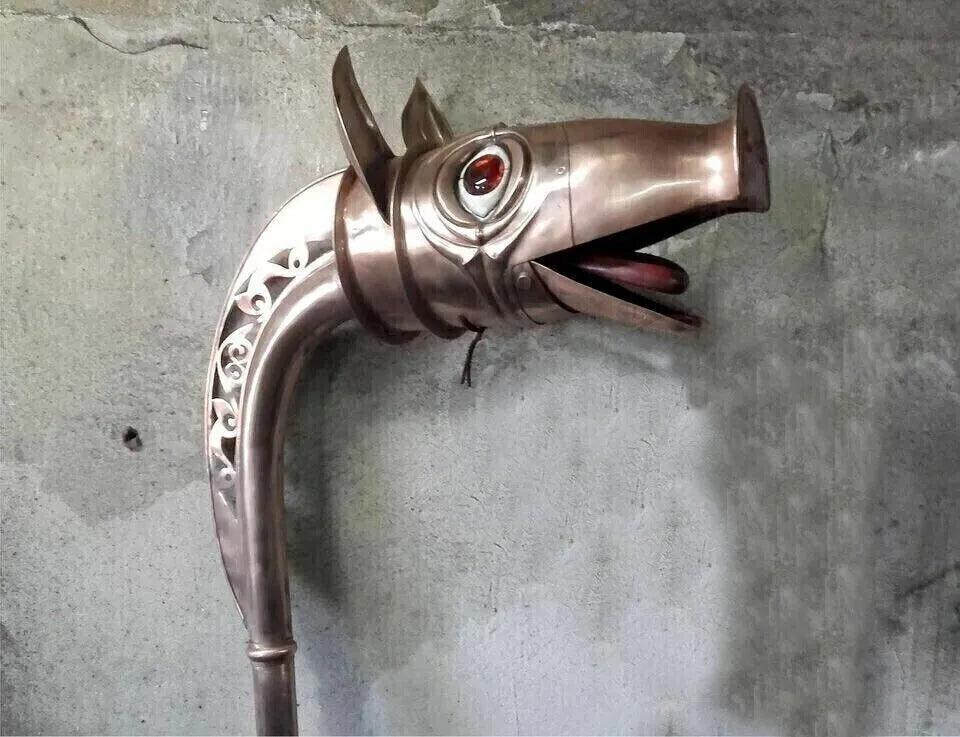
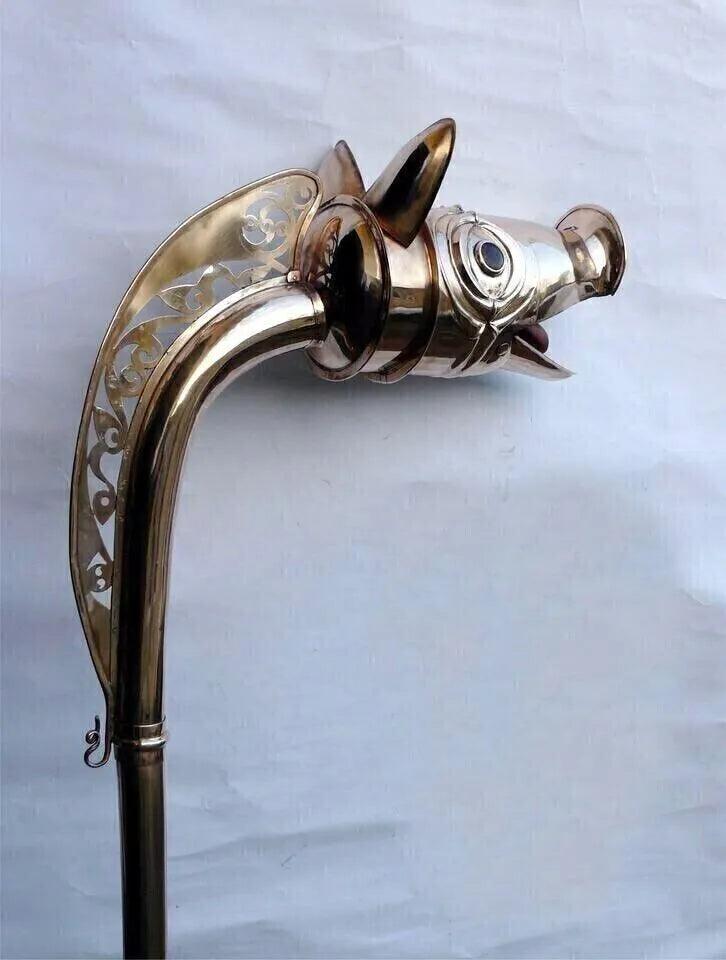
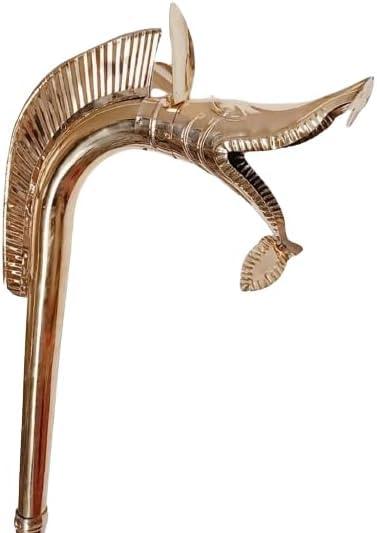

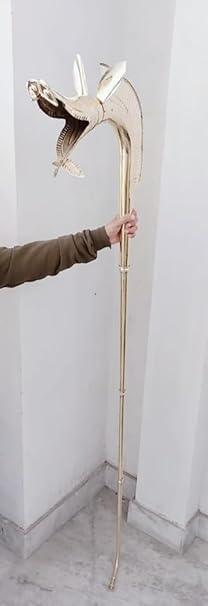
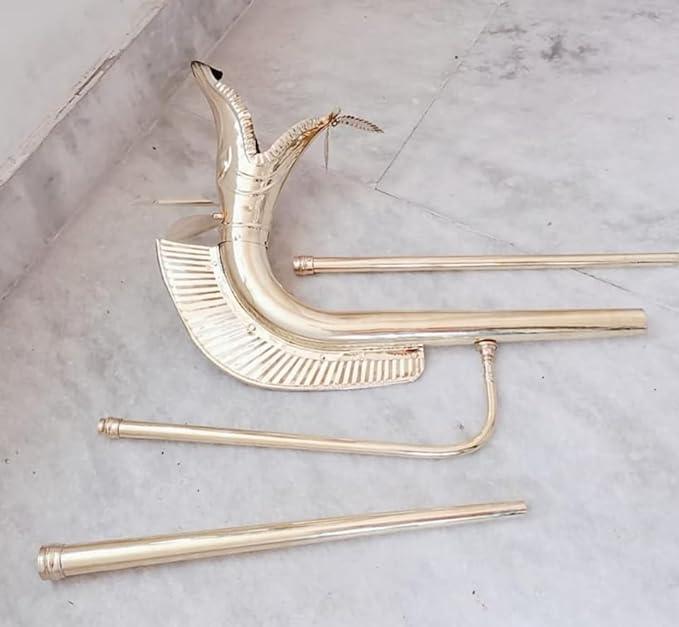


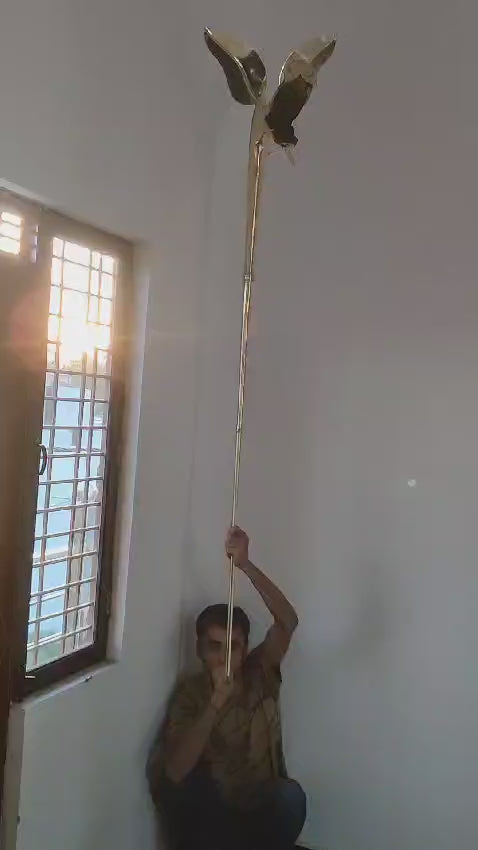
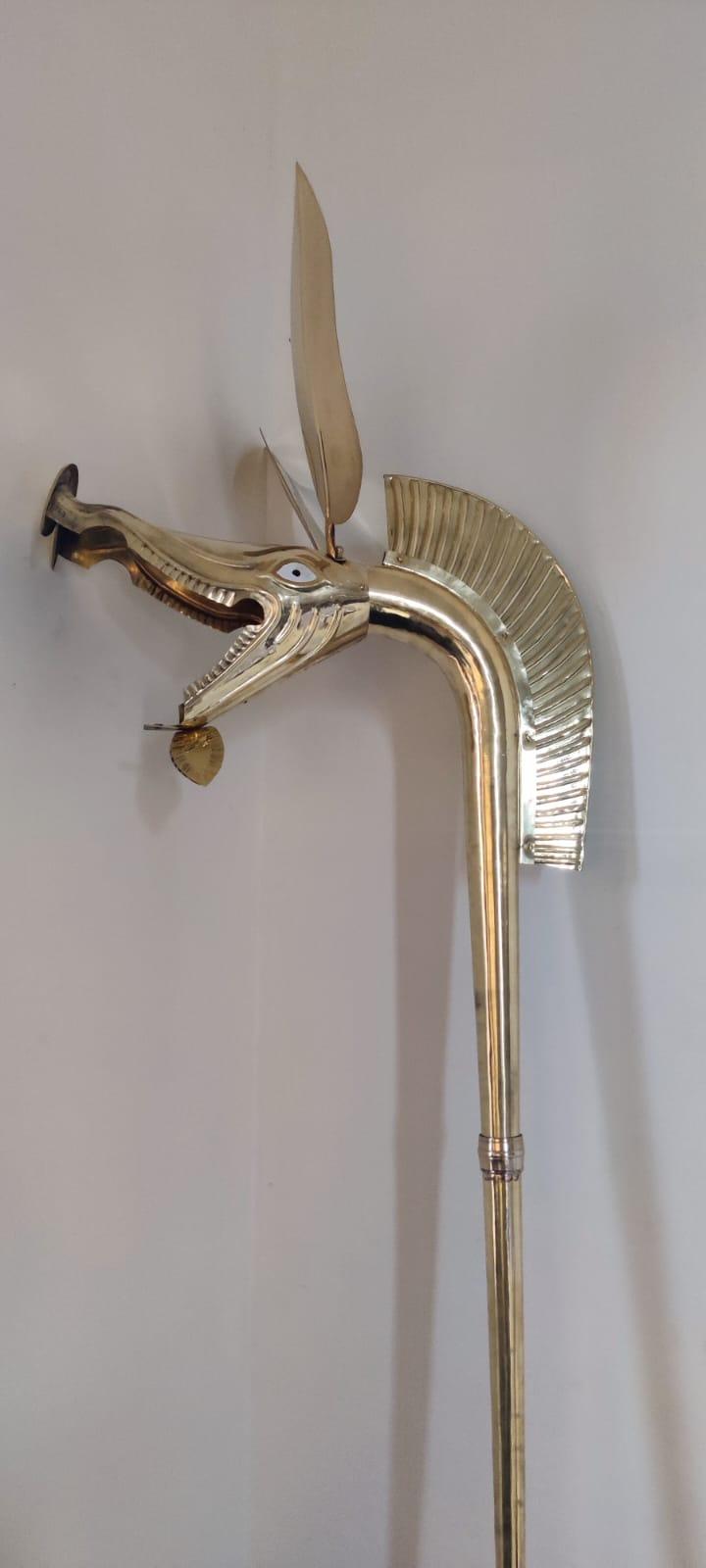

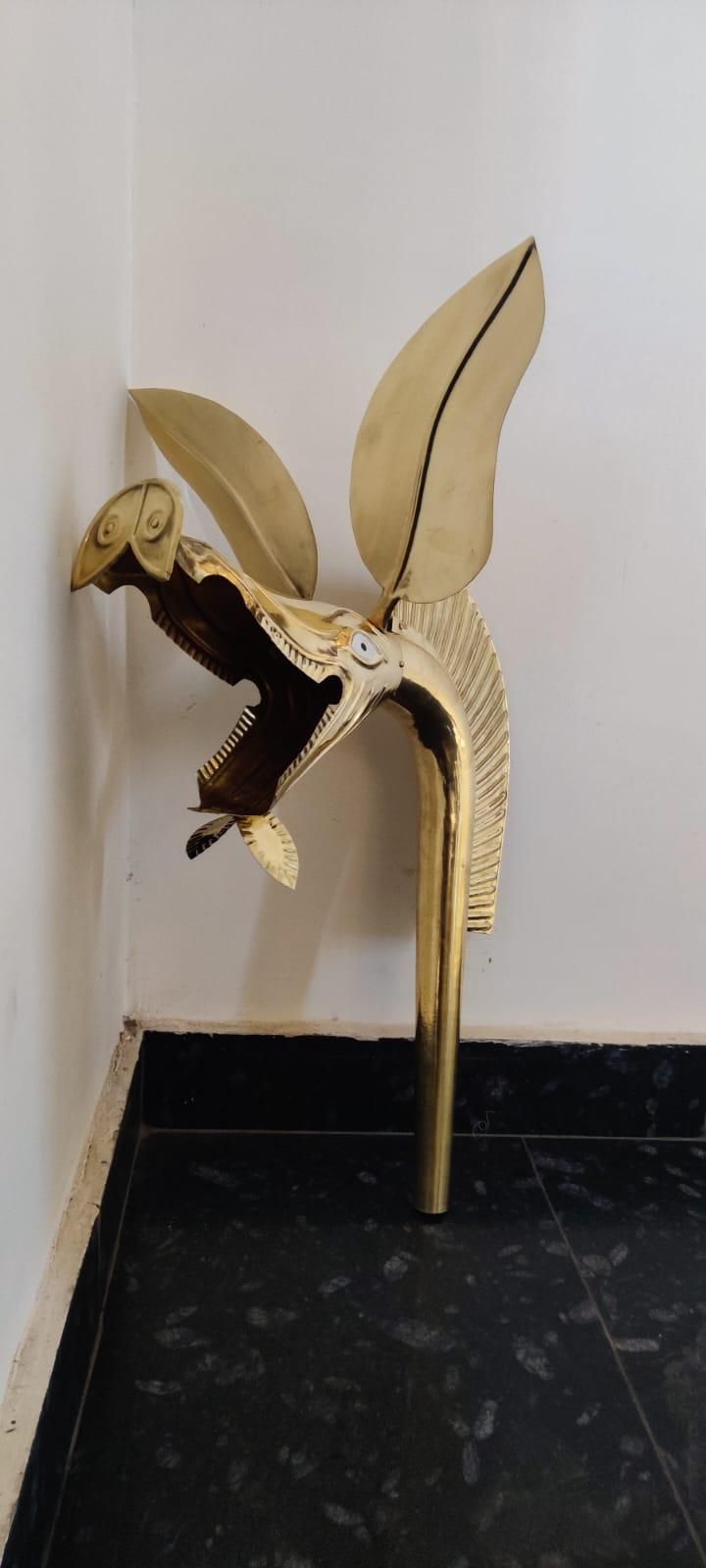

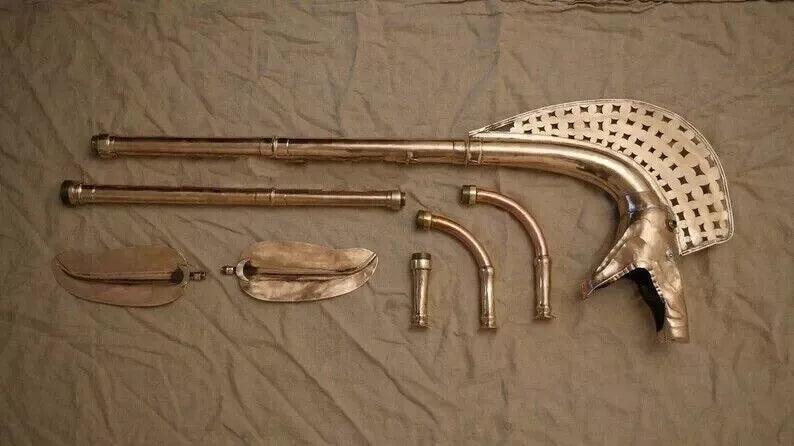


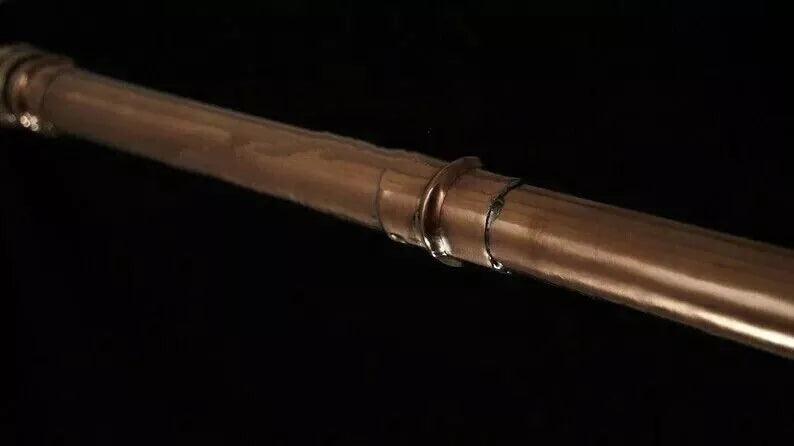


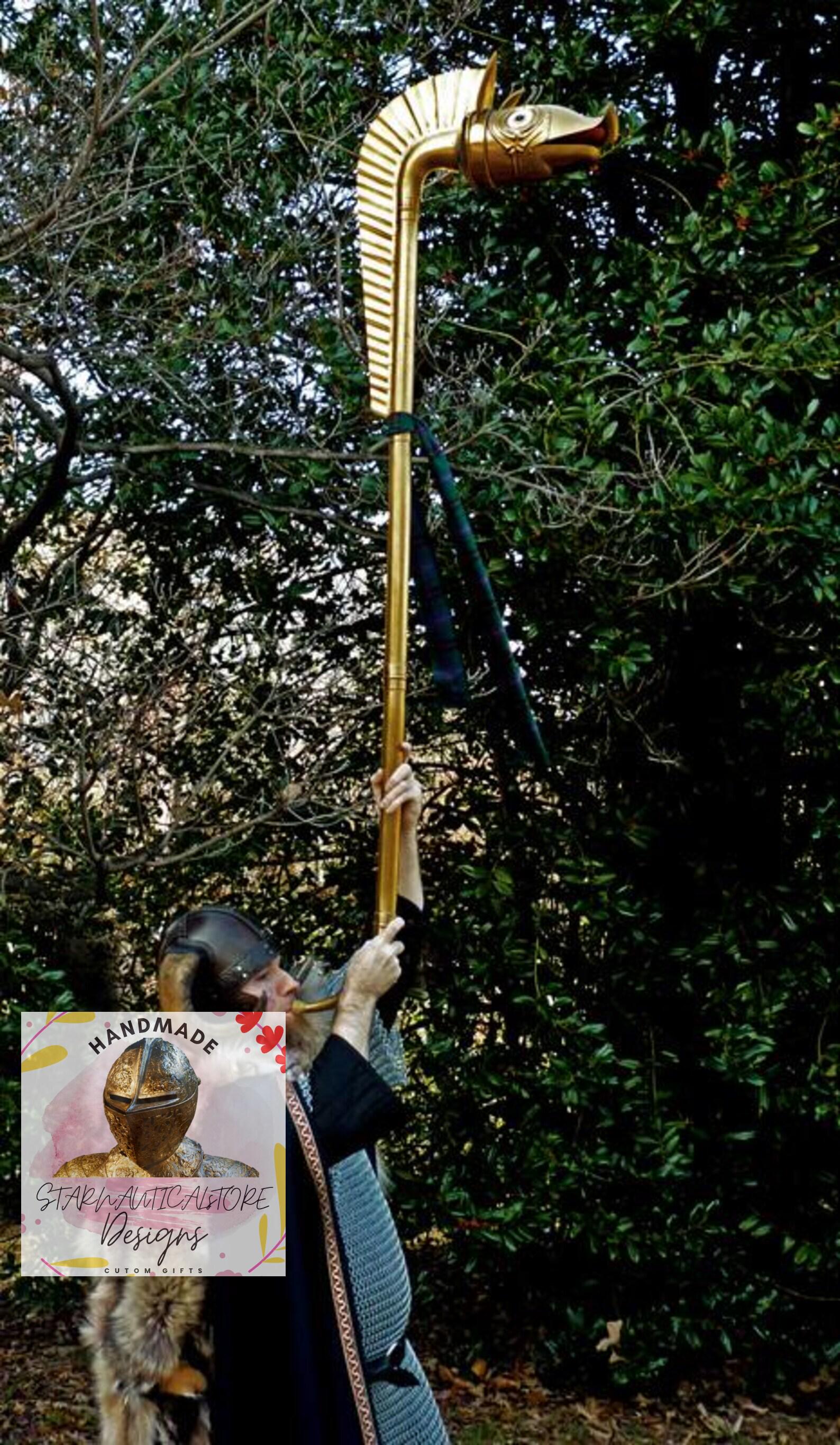
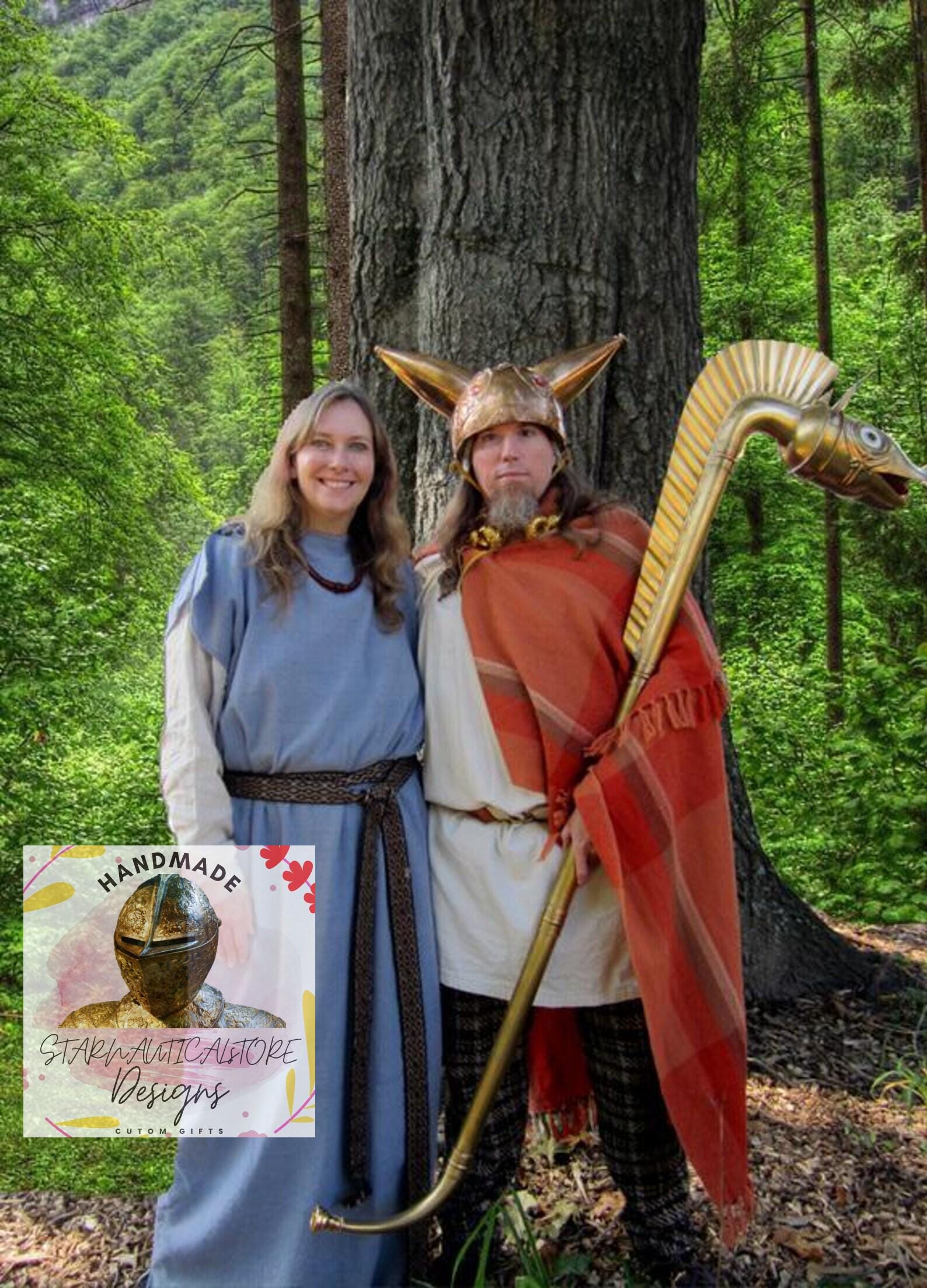

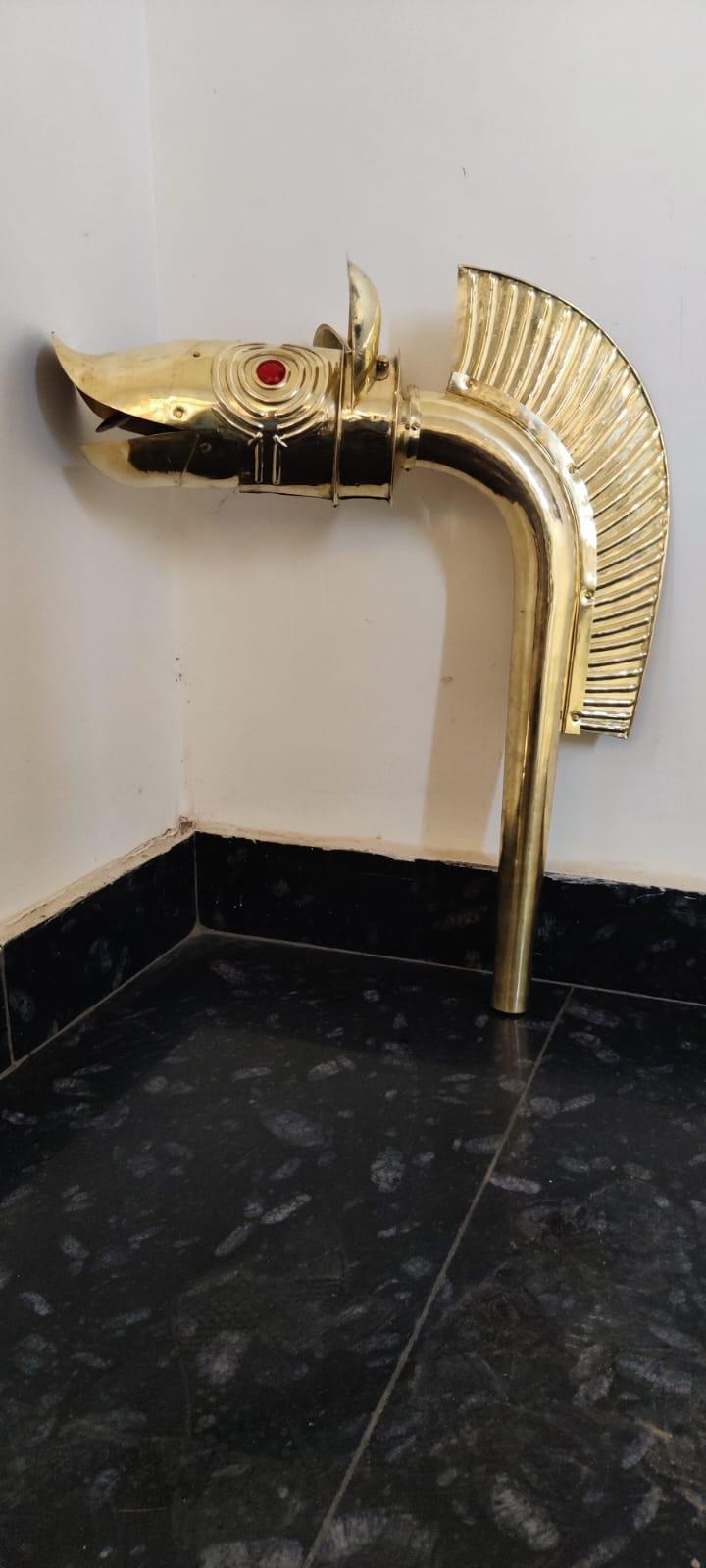

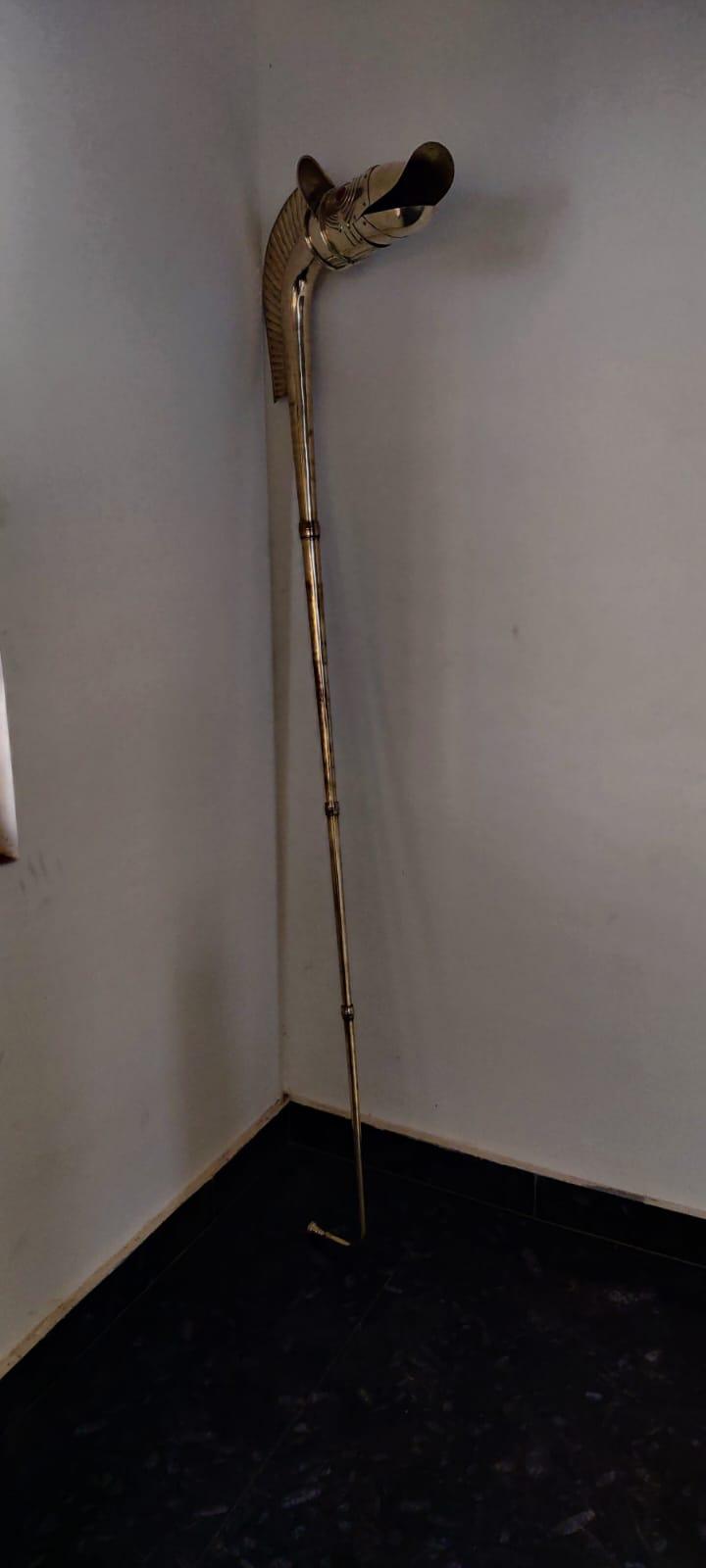
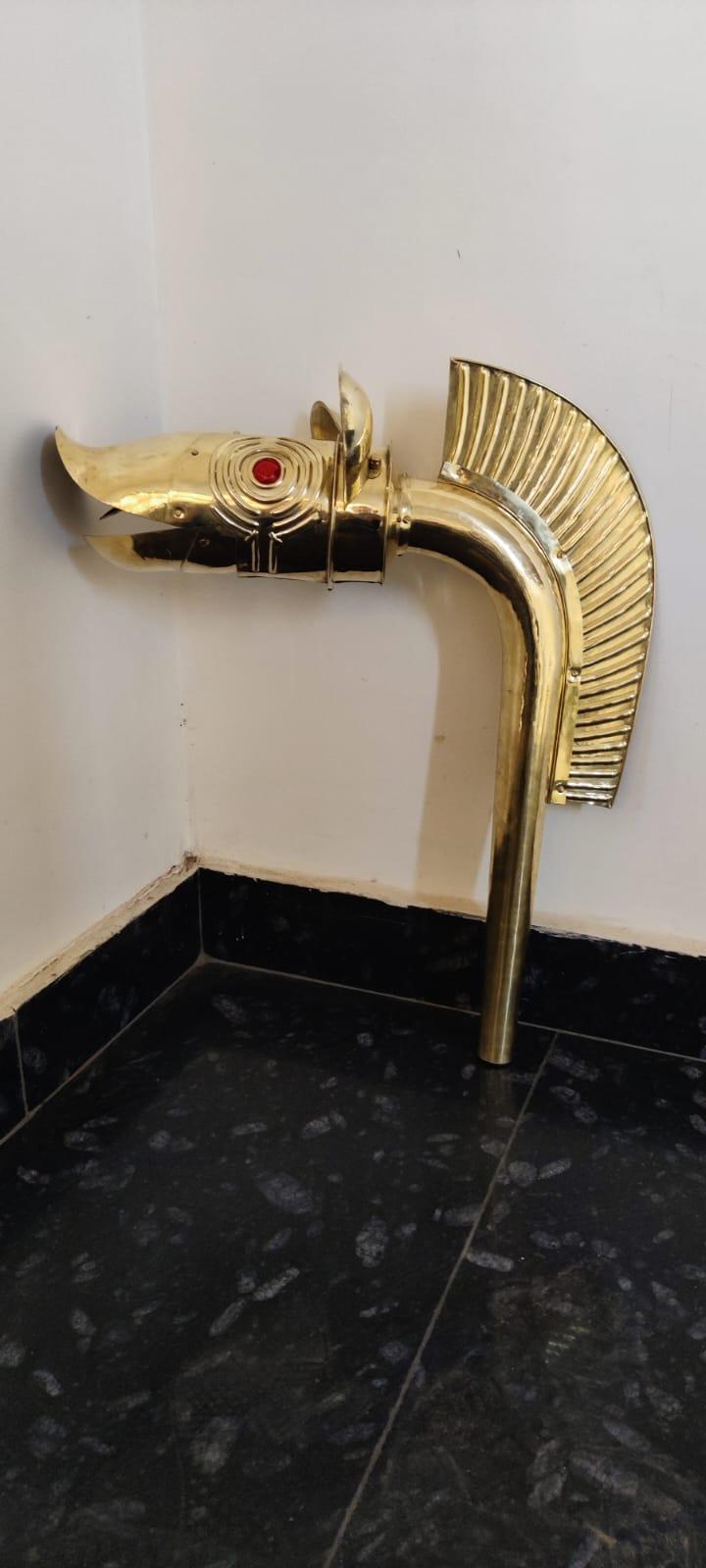

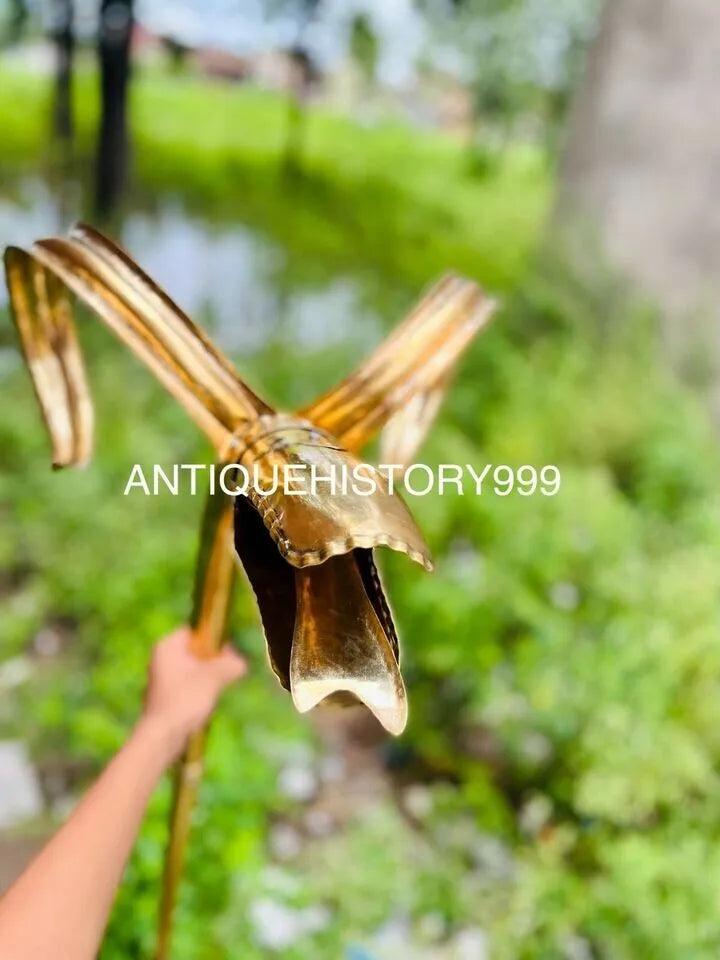
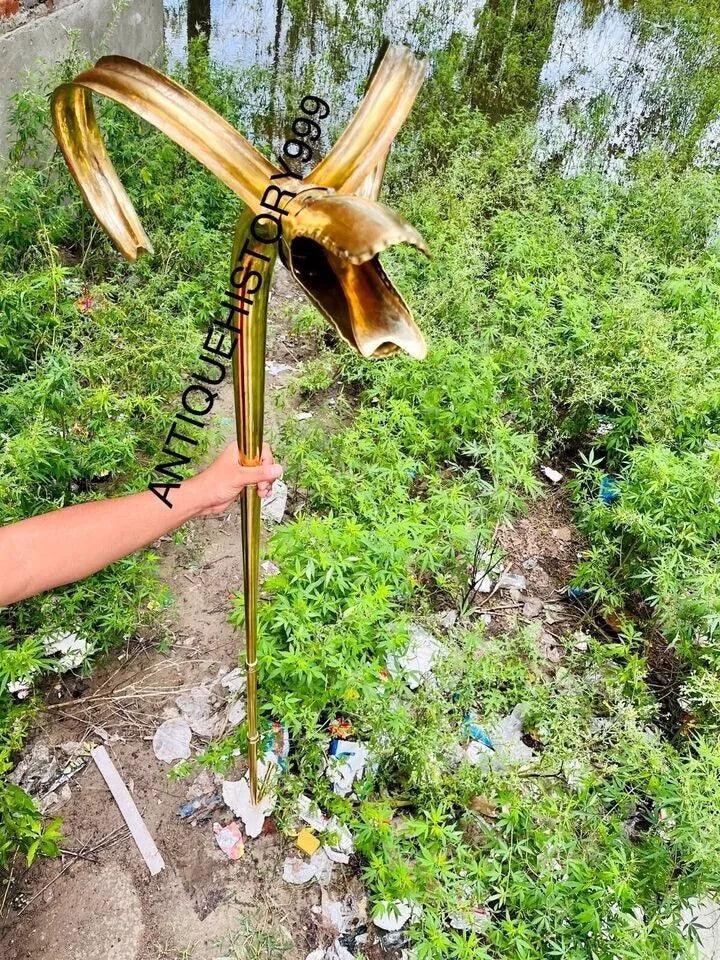
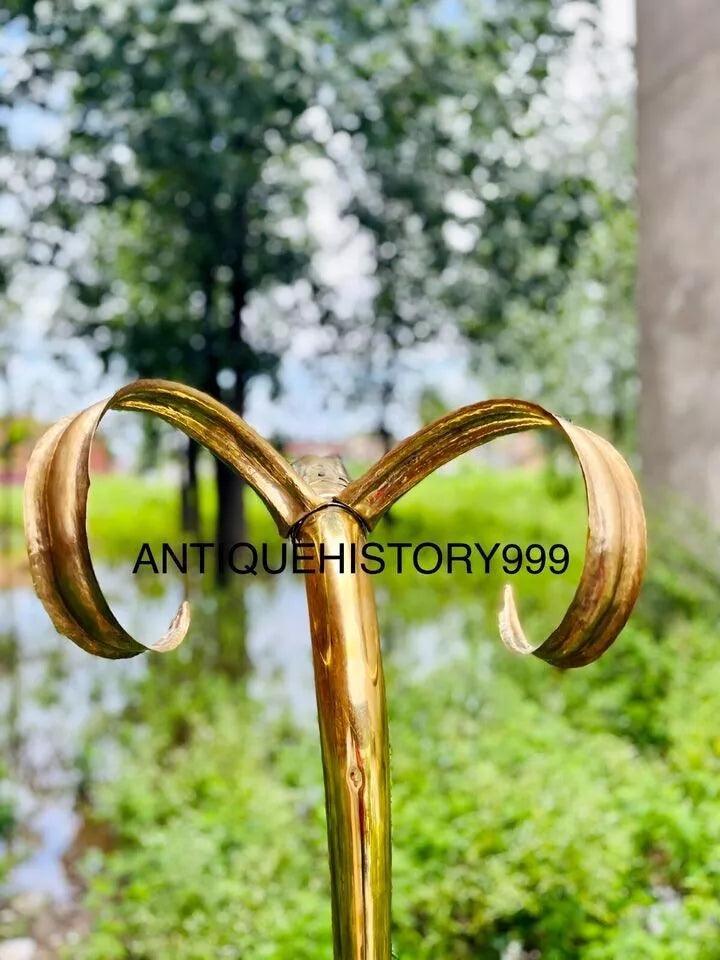

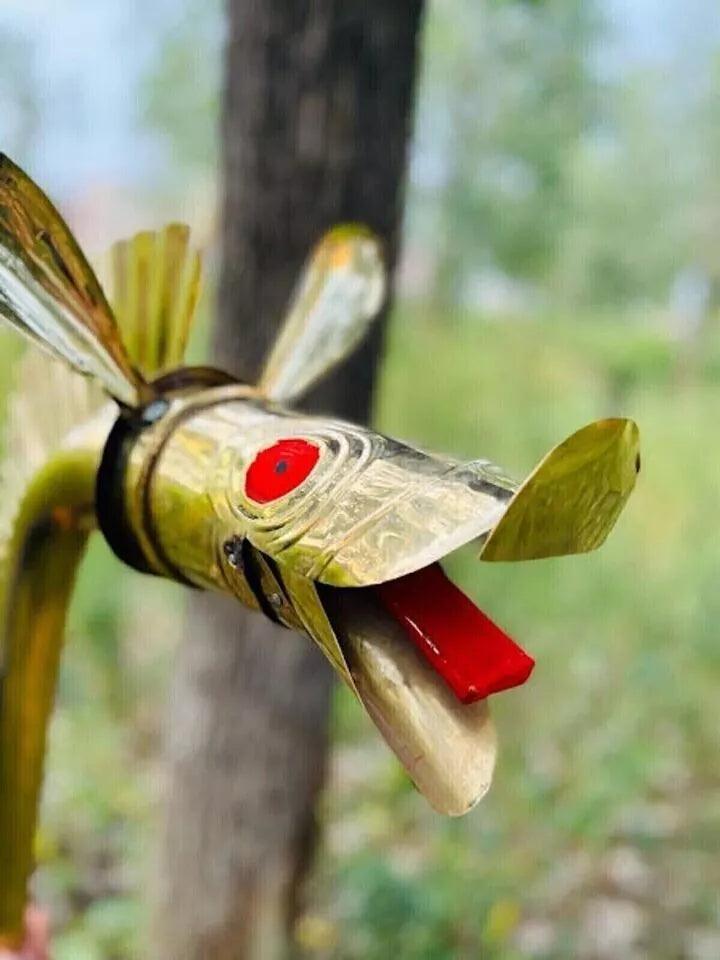

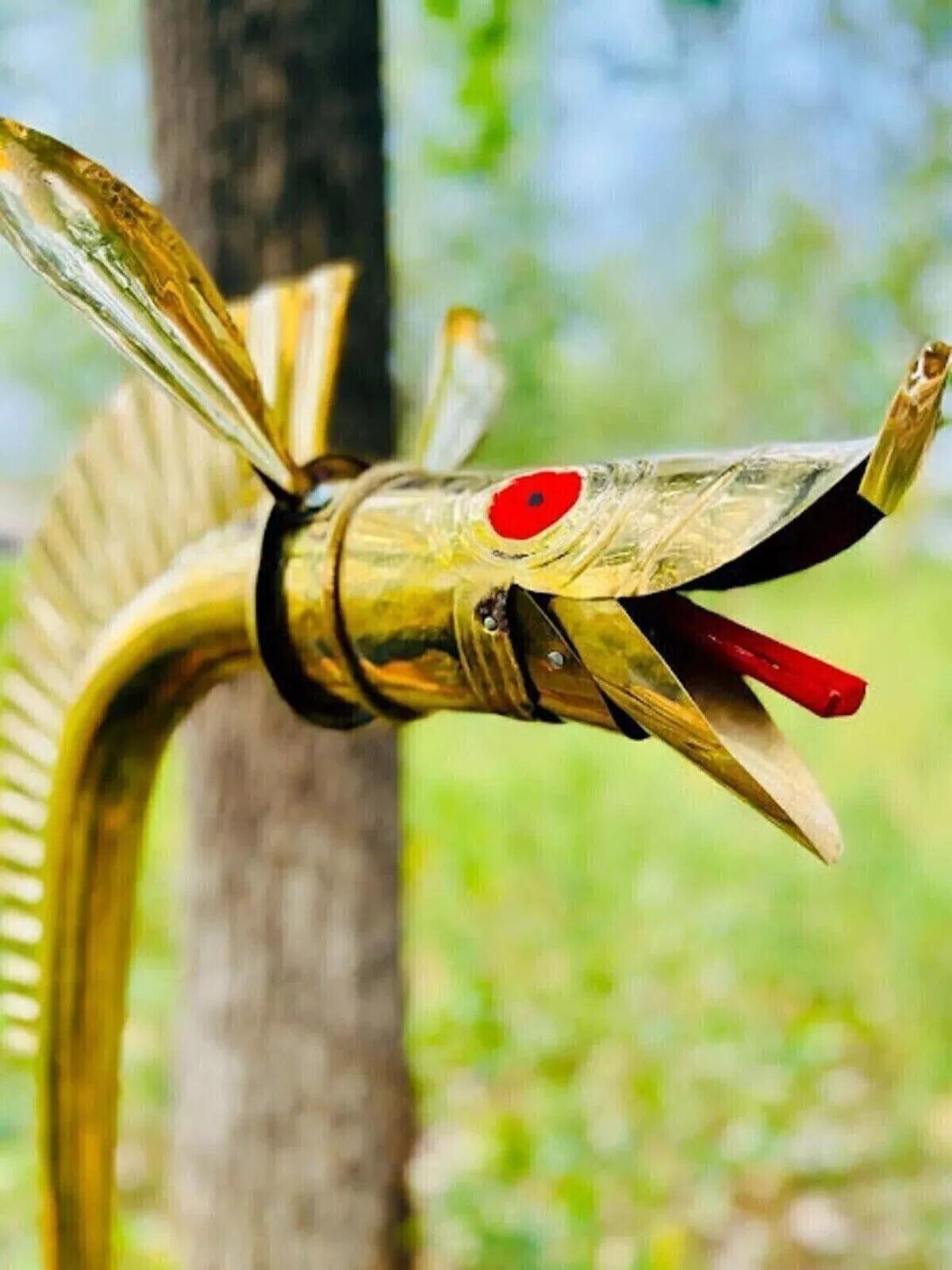
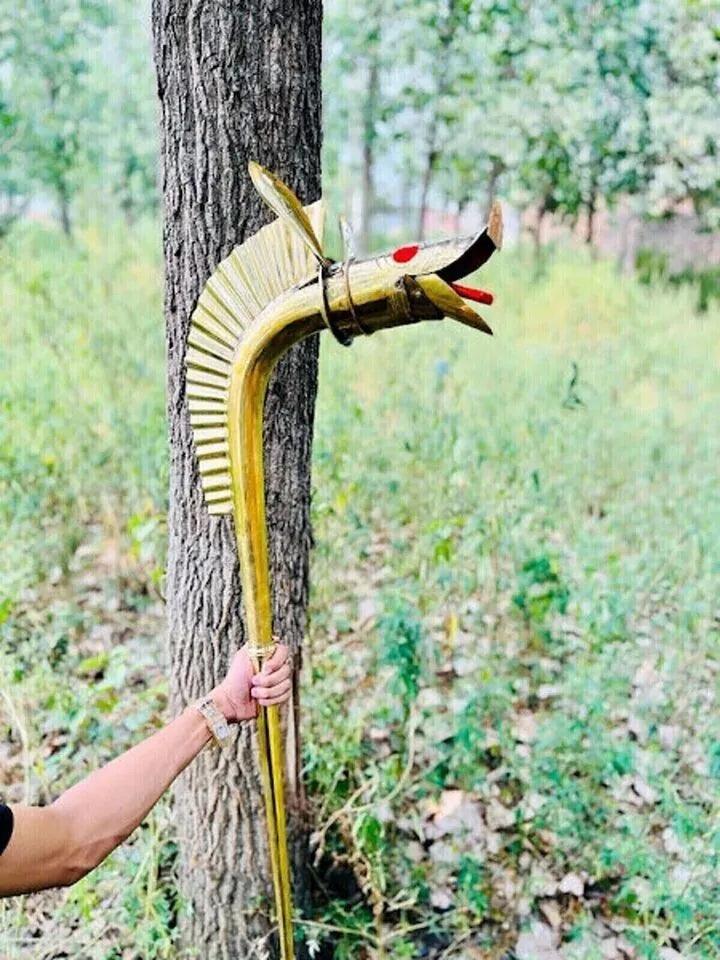

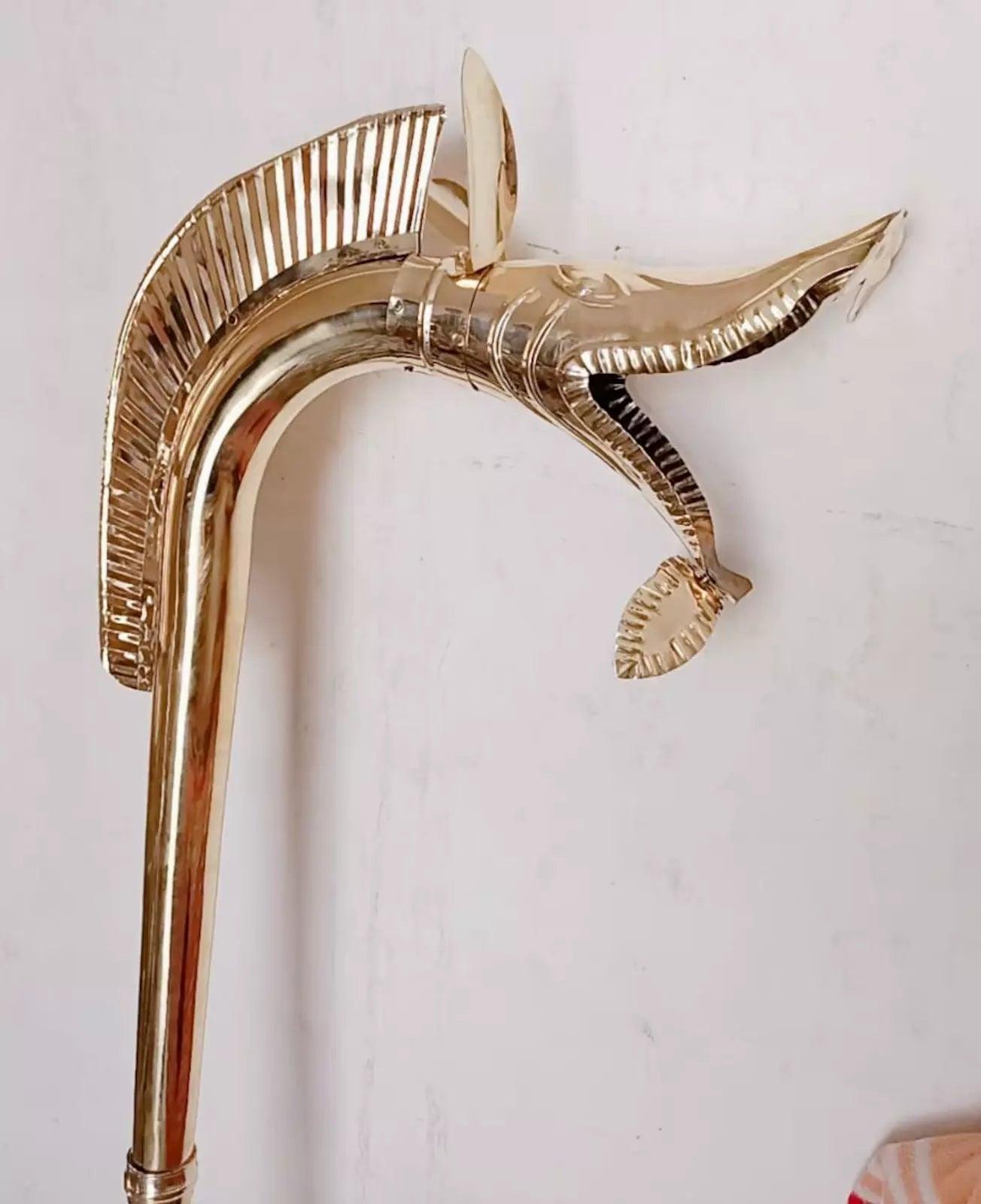

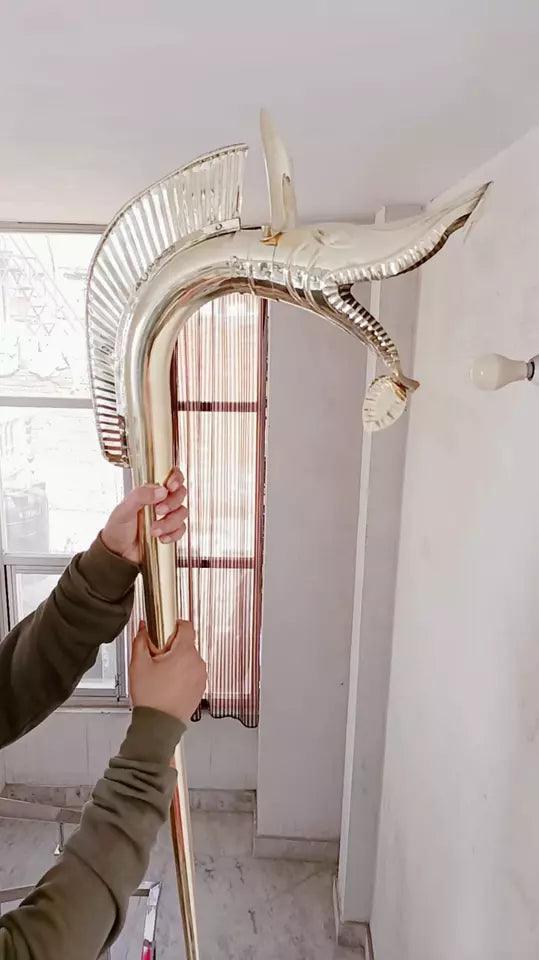
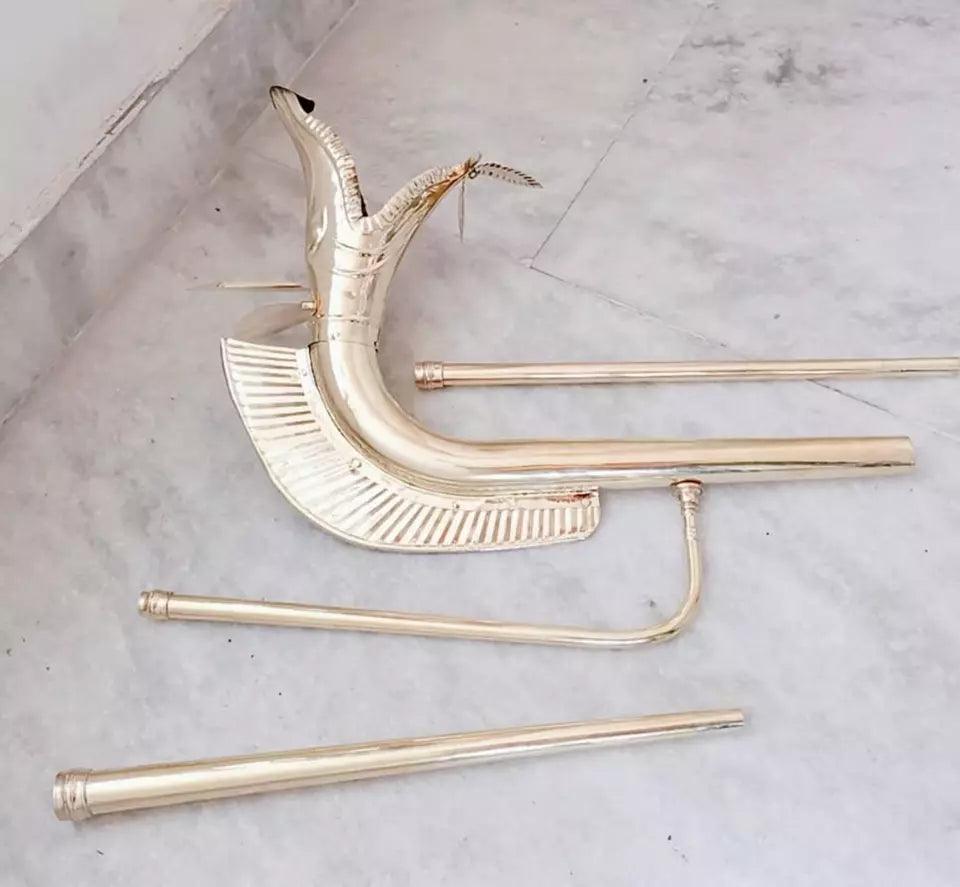
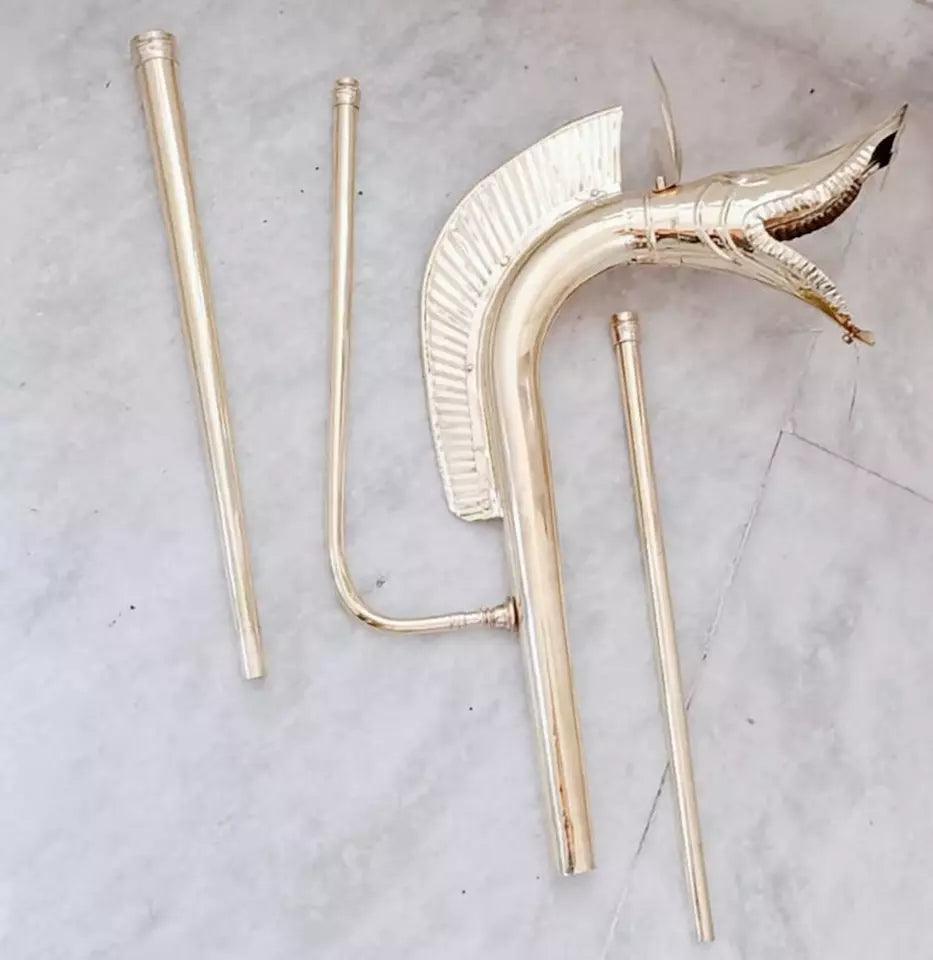
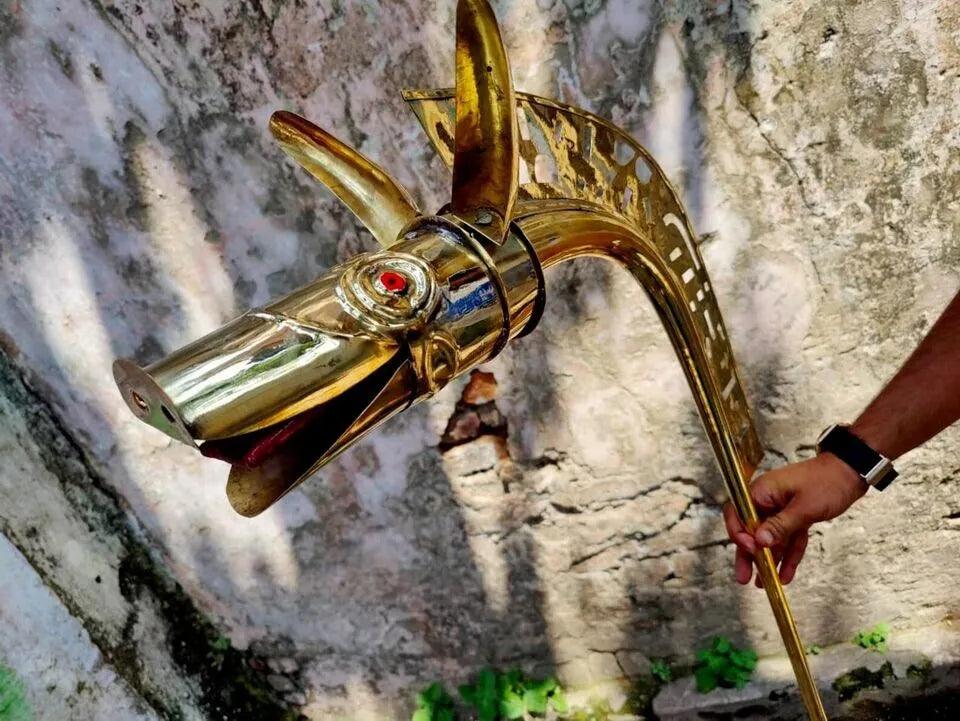

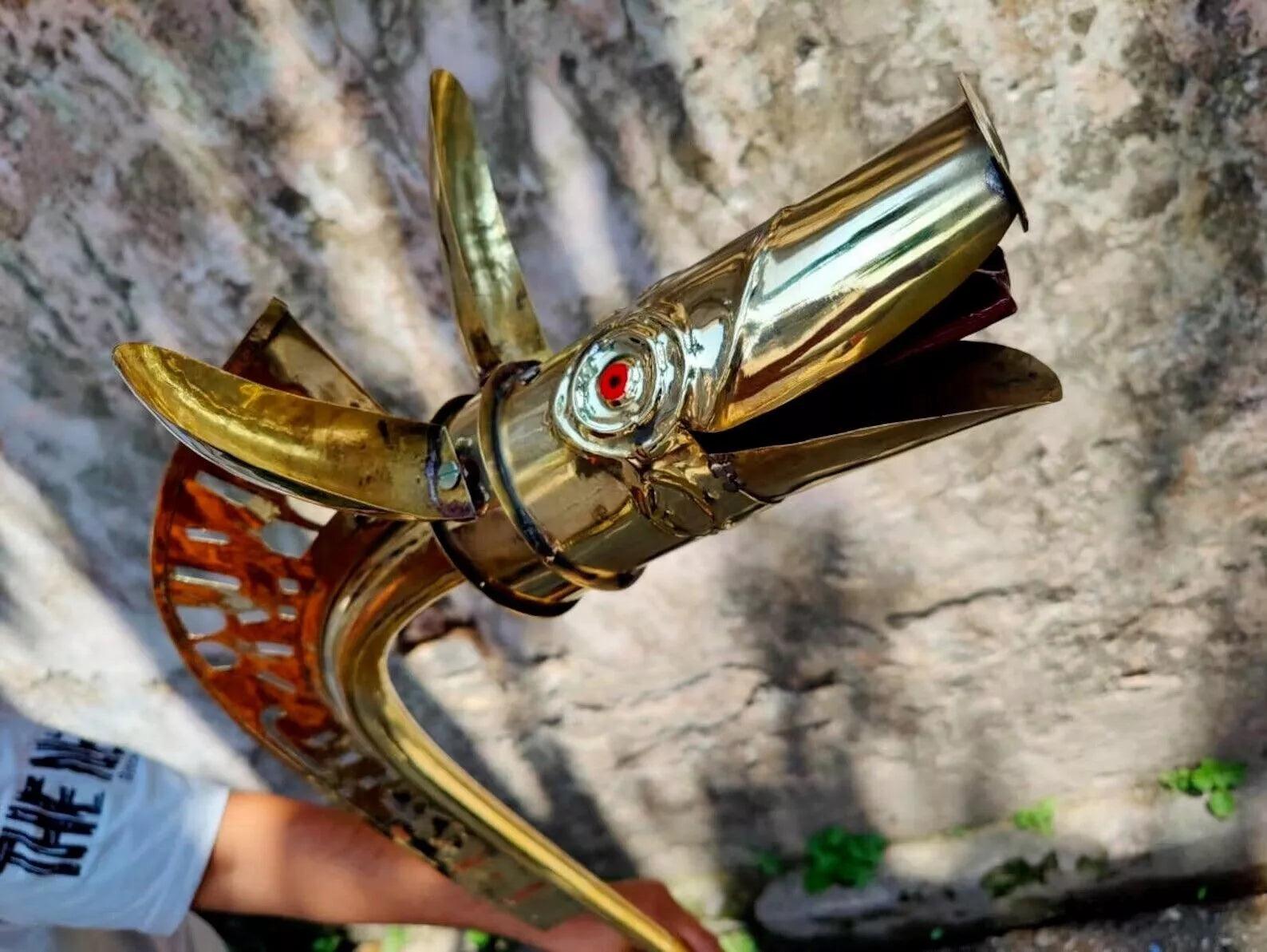
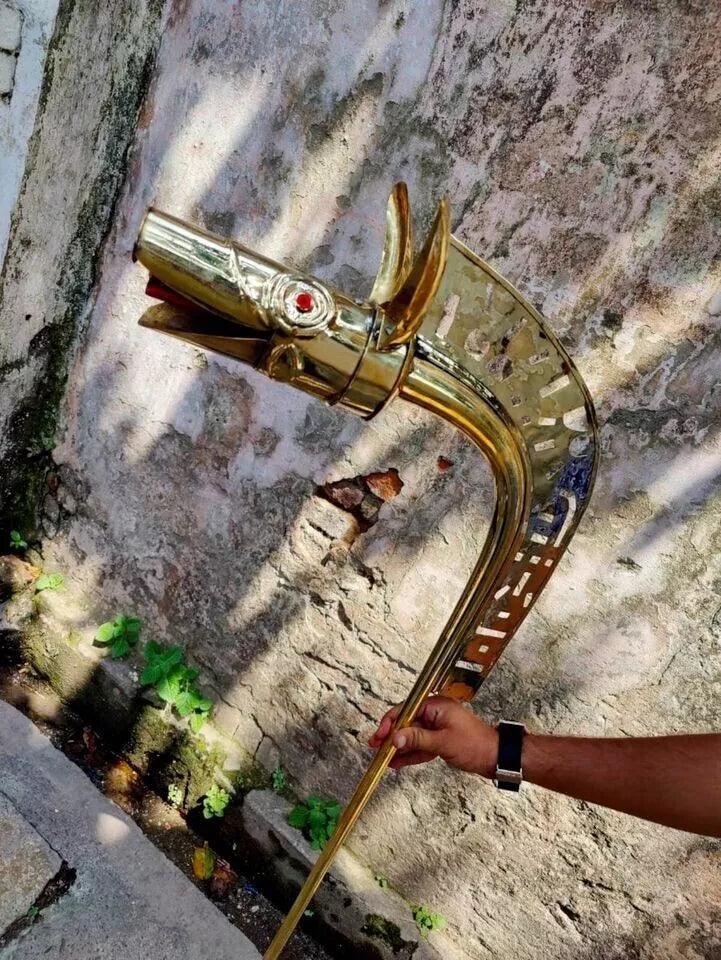
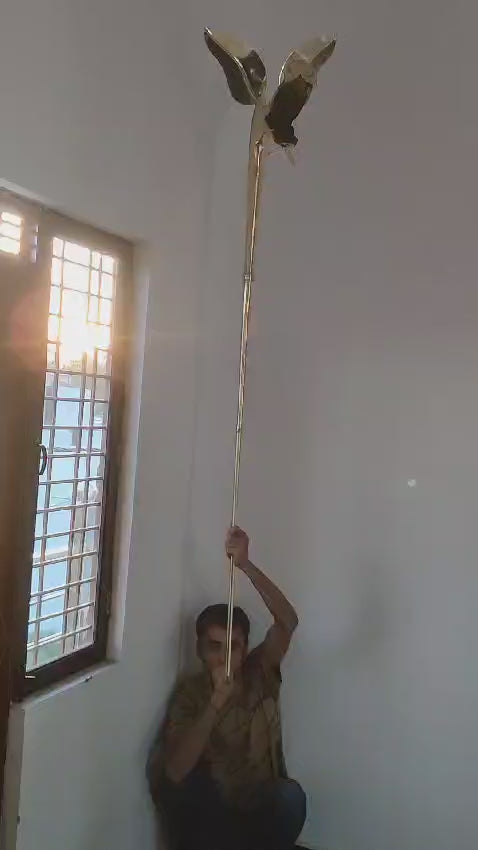
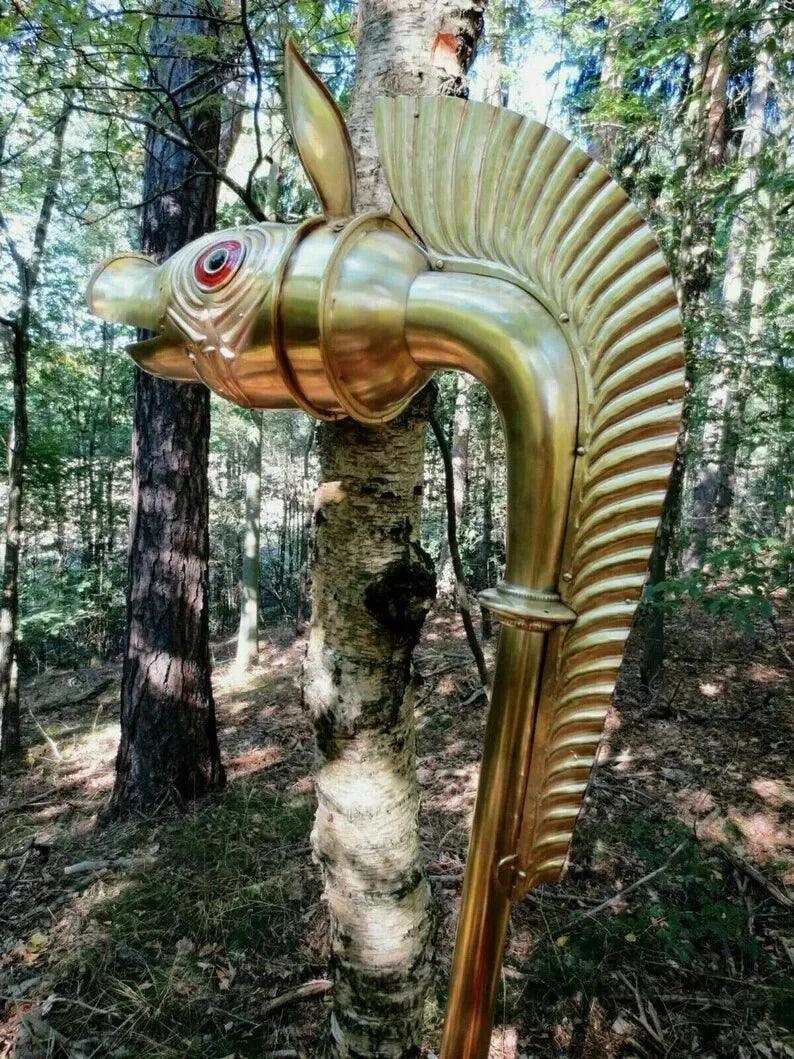

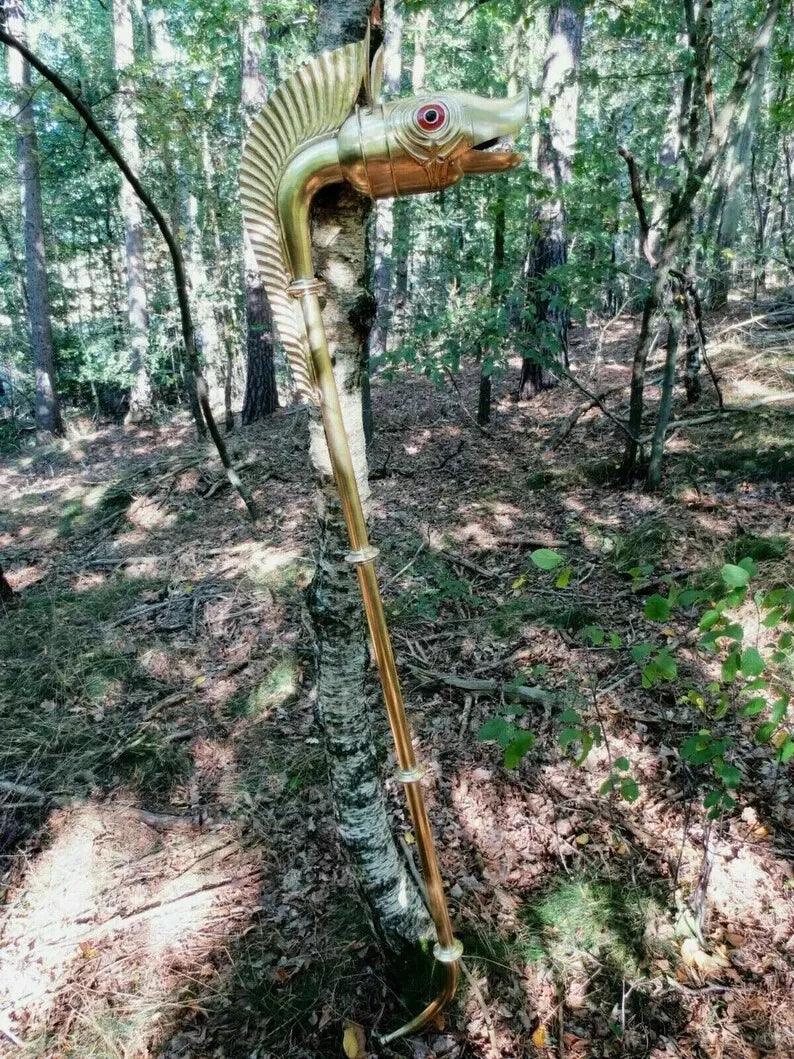


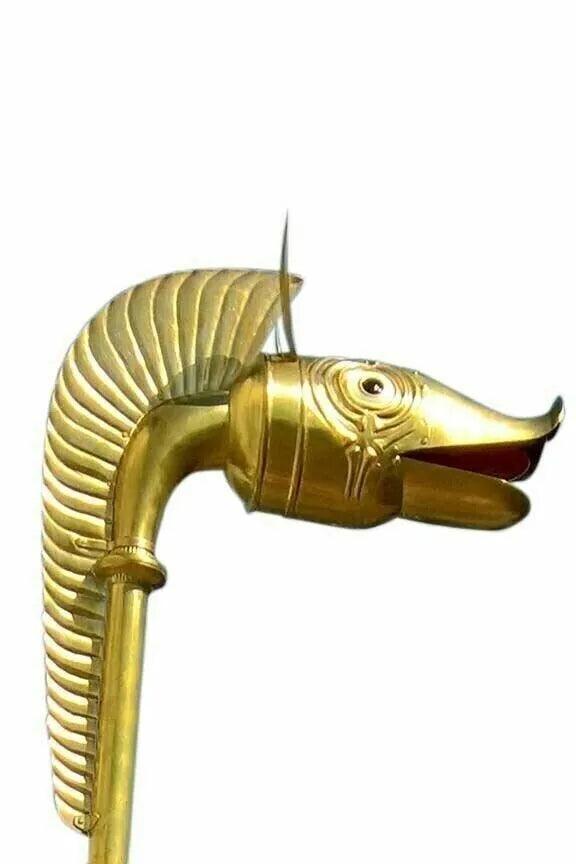
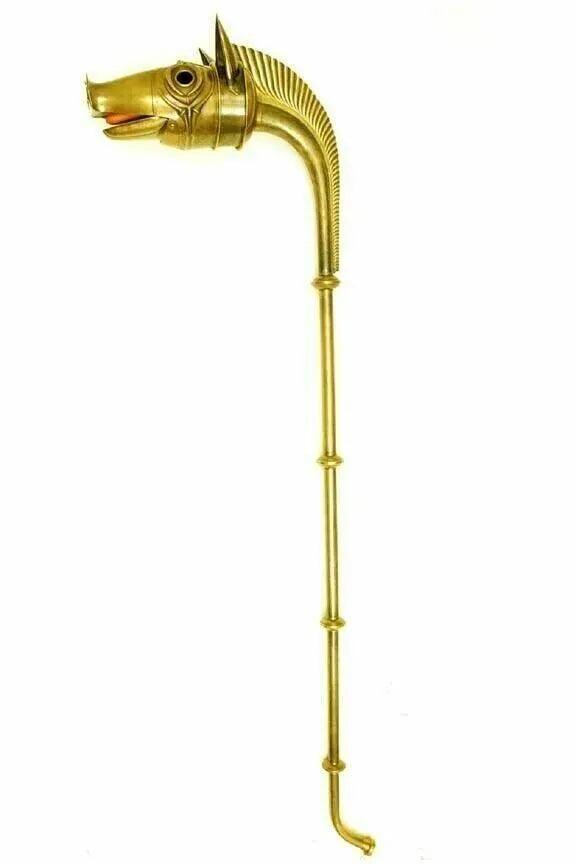

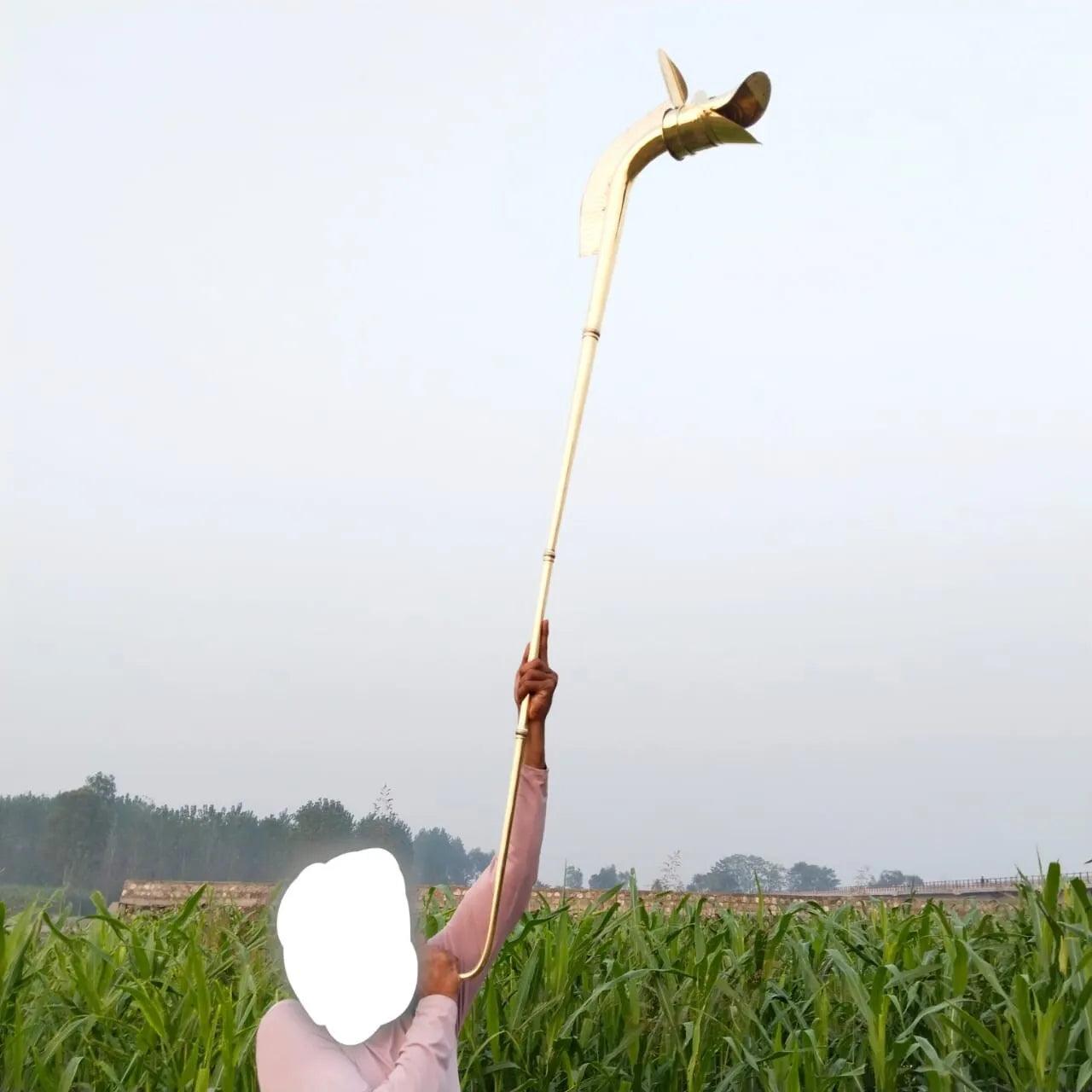

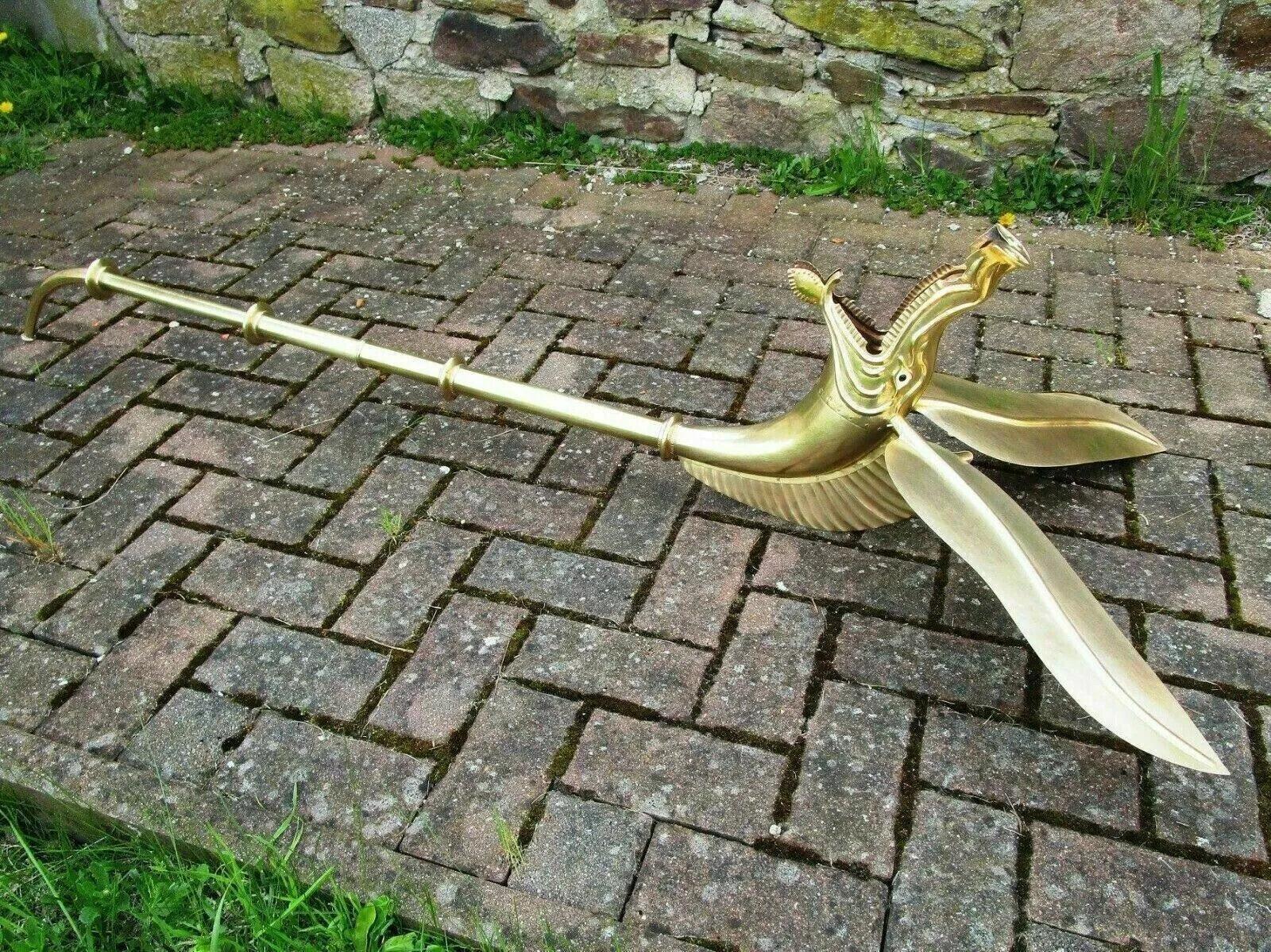
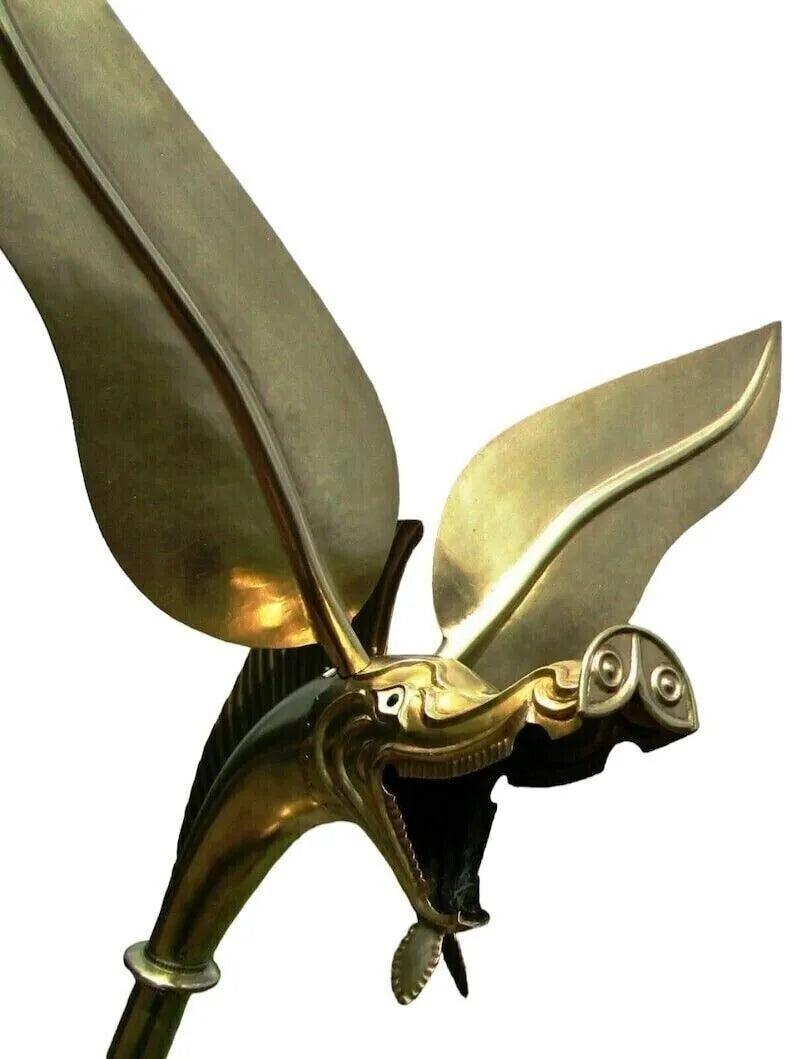
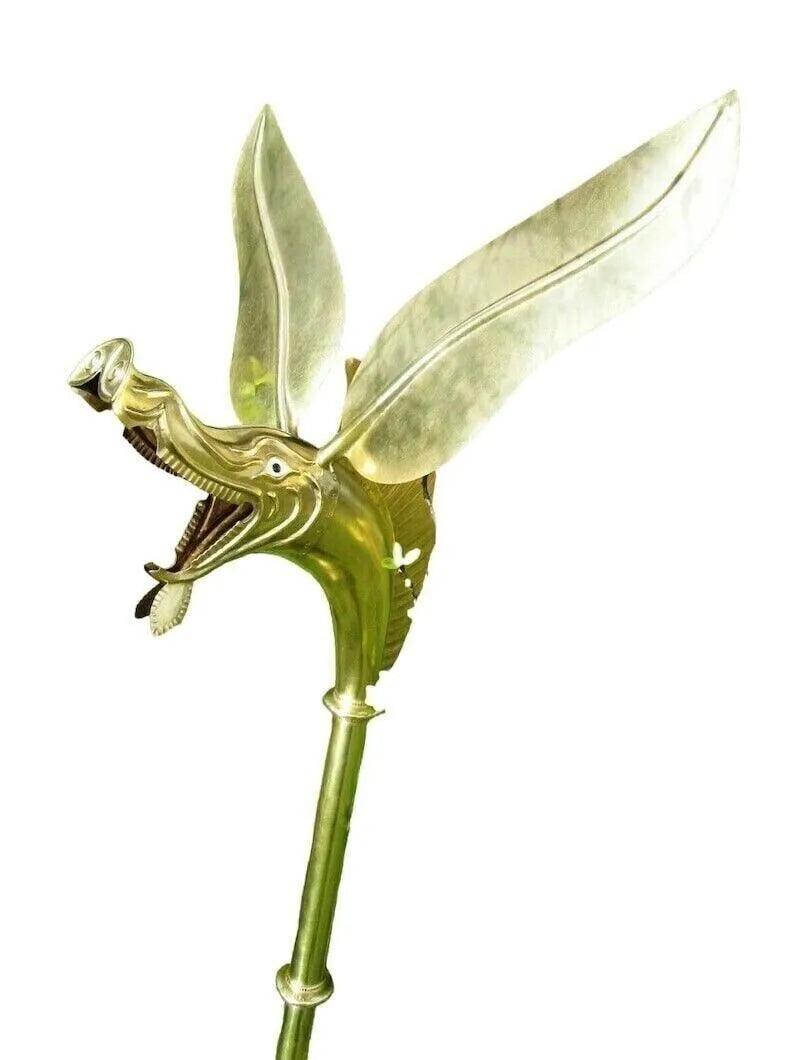
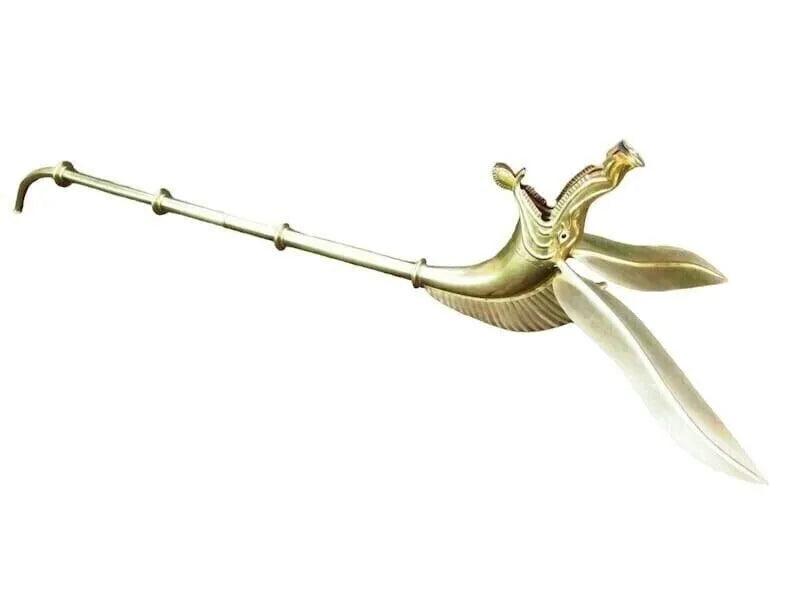

 Company Info
Company Info